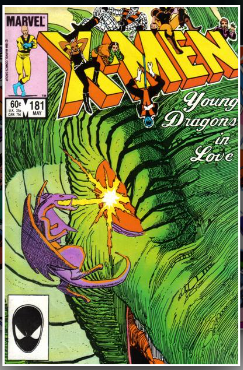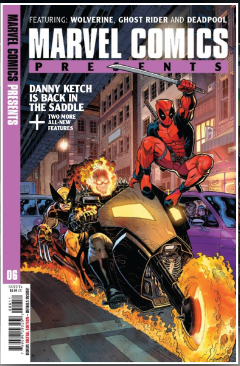Yooporium
The Mark Spears Monsters Series: Why It’s Captivating Fans
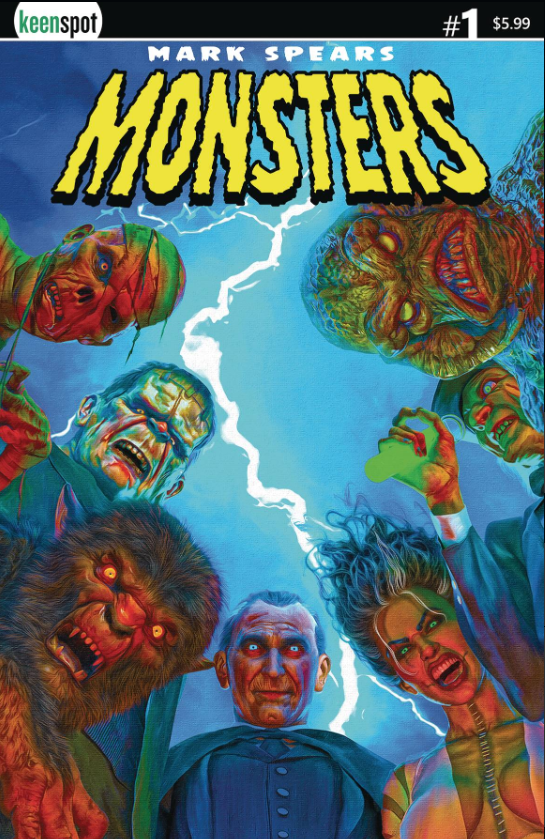
In the ever-evolving world of comics and collectibles, few names have captured the imagination of fans recently like Mark Spears. His latest venture, the Mark Spears Monsters series, has taken the comic community by storm, becoming a hot commodity among collectors and enthusiasts alike. But what exactly makes this series so special, and why is it resonating so deeply with its audience? Let’s delve into the key factors behind its meteoric rise.
A Nostalgic Tribute with a Modern Twist
One of the most striking aspects of the Mark Spears Monsters series is its unapologetic homage to classic horror. Drawing inspiration from iconic Universal Monsters and the pulp horror comics of the mid-20th century, Spears taps into a deep well of nostalgia. For fans who grew up on Frankenstein, Dracula, and the Wolfman, these stories and their meticulously crafted visuals feel like a loving nod to the past.
However, Spears doesn’t merely replicate the old. He injects fresh energy into these timeless tales, blending classic horror aesthetics with modern storytelling techniques. This fusion creates a unique experience that feels both familiar and new, enticing longtime fans and drawing in a younger audience eager to explore the roots of horror.
Stunning Artwork That Sets a New Standard
Mark Spears’ reputation as a master artist is well-earned, and the Monsters series showcases his talents at their peak. Each page is a visual feast, with painstakingly detailed illustrations that bring his ghoulish creations to life. Spears’ use of shadows, textures, and dynamic compositions creates an immersive atmosphere that pulls readers into his eerie worlds.
Moreover, his ability to balance grotesque imagery with subtle beauty ensures that the artwork appeals to a broad spectrum of fans. From the hauntingly realistic renderings of classic creatures to the imaginative reinterpretations of lesser-known monsters, every panel exudes passion and craftsmanship.
Limited Runs and Collectibility
In the world of comics and collectibles, scarcity often drives demand, and Spears has capitalized on this with limited print runs of the Monsters series. Each issue feels like a coveted treasure, complete with high-quality printing and exclusive variants. For collectors, owning a piece of the series isn’t just about enjoying the content; it’s about possessing a slice of modern comic history.
The series’ strategic release schedule and exclusive covers have also fueled a vibrant secondary market, where prices for certain editions have skyrocketed. This buzz adds an element of urgency, encouraging fans to secure their copies before they’re gone.
Tapping Into the Current Horror Renaissance
The Mark Spears Monsters series has also benefited from the broader resurgence of interest in horror across media. From blockbuster films to critically acclaimed TV shows, horror has seen a renaissance in recent years. Spears’ work aligns perfectly with this trend, offering fans a nostalgic yet innovative take on the genre.
The series also resonates with readers’ desire for escapism and catharsis. In uncertain times, horror provides a safe space to confront fears and revel in the fantastical, and Spears’ monsters deliver on both fronts.
Building a Community of Enthusiasts
Another factor contributing to the series’ popularity is Spears’ engagement with his fans. Through social media, conventions, and exclusive events, he has cultivated a loyal community of enthusiasts who are deeply invested in his work. This sense of connection amplifies the series’ appeal, turning casual readers into devoted advocates.
Keenspot, the publisher behind the Mark Spears Monsters series, has played a pivotal role in fostering this community. By partnering with Spears, they have ensured that the series receives the attention and quality it deserves. Their collaboration has elevated the series to new heights, providing fans with both digital and print editions that highlight Spears’ artistry.
Spears’ use of Kickstarter campaigns has further strengthened his bond with fans. These campaigns not only fund the production of his projects but also offer exclusive rewards, such as limited-edition covers, signed prints, and behind-the-scenes content. This approach gives fans a direct stake in the success of the series, creating a sense of ownership and excitement that extends far beyond traditional publishing.
Fans often share their collections, fan art, and personal stories about their love for the Monsters series, creating a ripple effect that extends Spears’ reach. Platforms like Kickstarter and Keenspot’s promotional efforts have helped transform casual readers into a passionate and active community, ensuring that the series continues to thrive.
Conclusion: A Modern Classic in the Making
The Mark Spears Monsters series is more than just a comic—it’s a celebration of horror’s enduring appeal and a testament to the power of masterful storytelling and artistry. By blending nostalgia with innovation, Spears has created a phenomenon that resonates with fans on multiple levels.
Whether you’re a seasoned collector, a horror aficionado, or a newcomer looking to explore the genre, the Mark Spears Monsters series offers something truly special. As its popularity continues to soar, it’s clear that this modern classic is here to stay, ensuring its place in the pantheon of horror greatness.
Top 15 List of Comics Submitted to CGC for Grading (Week of January 7th, 2025)
The Certified Guaranty Company (CGC) has seen a surge in submissions this past week, with a diverse array of titles captivating collectors. Here’s a look at the top 15 books submitted, along with insights into why they’re generating such buzz:

-
Venom: Lethal Protector #1 (1993, Marvel Comics): The debut of Venom in his own solo series, this issue holds significant historical value. Featuring a Spider-Man appearance and a striking red holo-foil cover, it’s a highly sought-after collectible.

-
Batman and Robin: Year One #1 Ross Variant Cover A (2024, DC Comics): This modern release boasts a coveted Alex Ross variant cover, instantly increasing its desirability among collectors. The Mark Waid story and Chris Samnee art further enhance its appeal.

-
Star Wars: Ahsoka #2 Okazaki Variant Cover (2024, Marvel Comics): Featuring art by the acclaimed Takashi Okazaki, this variant cover adds a unique aesthetic to the popular Ahsoka series. Its limited availability is driving strong collector interest.
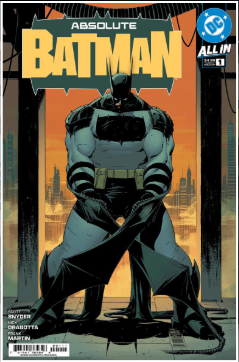
-
Absolute Batman #1 (2024, DC Comics): This high-end format of Scott Snyder’s acclaimed Batman run is a premium collectible for fans of the Dark Knight. The Nick Dragotta art and overall presentation make it a must-have for many.
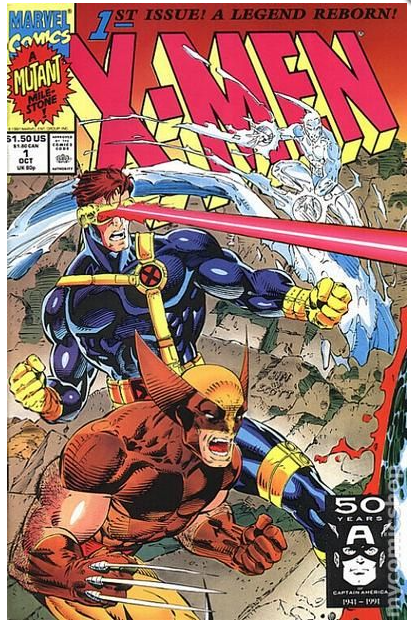
-
X-Men #1 (1991, Marvel Comics): A landmark issue introducing the Acolytes and featuring iconic Jim Lee art, X-Men #1 remains a cornerstone of X-Men history. The four-part connected cover adds another layer of intrigue for collectors.
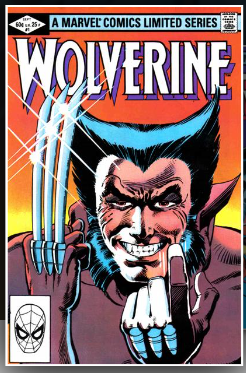
-
Wolverine Limited Series #1 (1982, Marvel Comics): Witness the birth of Wolverine’s solo adventures in this seminal issue. The debut of Yukio in a cameo appearance adds further collector interest.
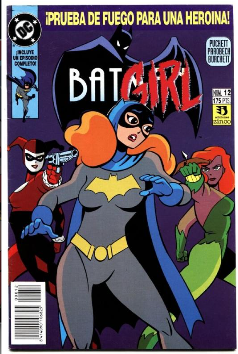
-
Batman Adventures #12 Spanish Edition (1993, Ediciones Zinco): This Spanish edition holds significance as the first appearance of Harley Quinn in comics outside of DC continuity. The Kelley Puckett story and Mike Parobeck art contribute to its allure.

-
Marvel Super Heroes Secret Wars #8 (1984, Marvel Comics): This issue reveals the origin of the alien symbiote that would eventually become Venom, making it a crucial piece of Marvel history. The Jim Shooter story and Mike Zeck art solidify its collector value.
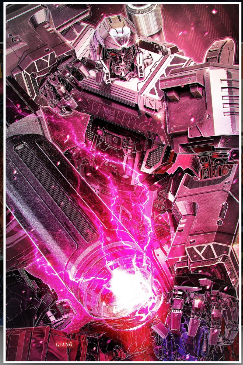
-
Transformers #13 Big Time Collectibles Edition (2024, Image/Skybound): The “Virgin” foil cover on this limited edition adds a unique visual element, driving collector demand. The Daniel Warren Johnson story and Jason Howard art further enhance its appeal.

-
Rise of the Powers of X #1 Szerdy “Virgin” Edition (2024, Marvel Comics): This “Virgin” edition, featuring art by Nathan Szerdy, offers a clean and unadulterated presentation of the artwork. The Kieron Gillen story and R.B. Silva art also contribute to its desirability.

-
X-Men #2 (1991, Marvel Comics): Building on the success of its predecessor, this issue features the introduction of key characters like Magneto, Val Cooper, Nick Fury, and Moira MacTaggert, solidifying its place in X-Men history.
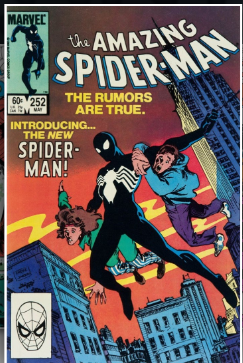
-
Amazing Spider-Man #252 (1984, Marvel Comics): This issue ties into Marvel Team-Up #141 for the first appearance of the black costume, making it a significant moment in Spider-Man’s history. The homage to Amazing Fantasy #15 on the cover adds another layer of collector interest.
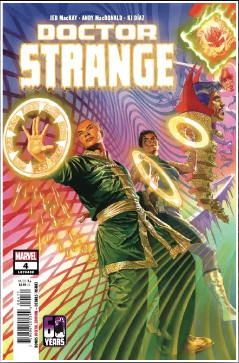
-
Doctor Strange #4 (2023, Marvel Comics): Featuring an Alex Ross cover, this issue of Doctor Strange #430 is likely attracting collectors due to Ross’s renowned artistic style and the enduring popularity of the character.

-
Omega Men #3 (1983, DC Comics): This issue marks the first appearance of the iconic anti-hero Lobo, driving significant collector interest, especially since the announcement that Lobo is to be played by Jason Mamoa. The Roger Slifer story and Keith Giffen/Mike DeCarlo art further contribute to its appeal.
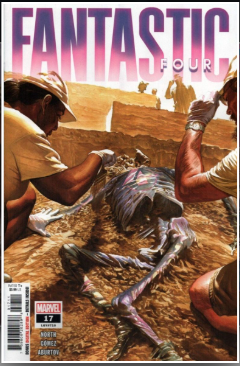
-
Fantastic Four #17 (2024, Marvel Comics): This issue of Fantastic Four #710 features another Alex Ross cover, likely contributing to its popularity among collectors. The Ryan North story and Carlos Gόmez art also add to its appeal.
This list highlights the most popular books submitted to CGC for the week of January 7th, 2025! As the comic book market continues to evolve, it’s essential to stay informed about the latest trends and collector demand to make informed investment decisions!
Have Comics Lost Their Magic? Golden Age vs. Modern Comics
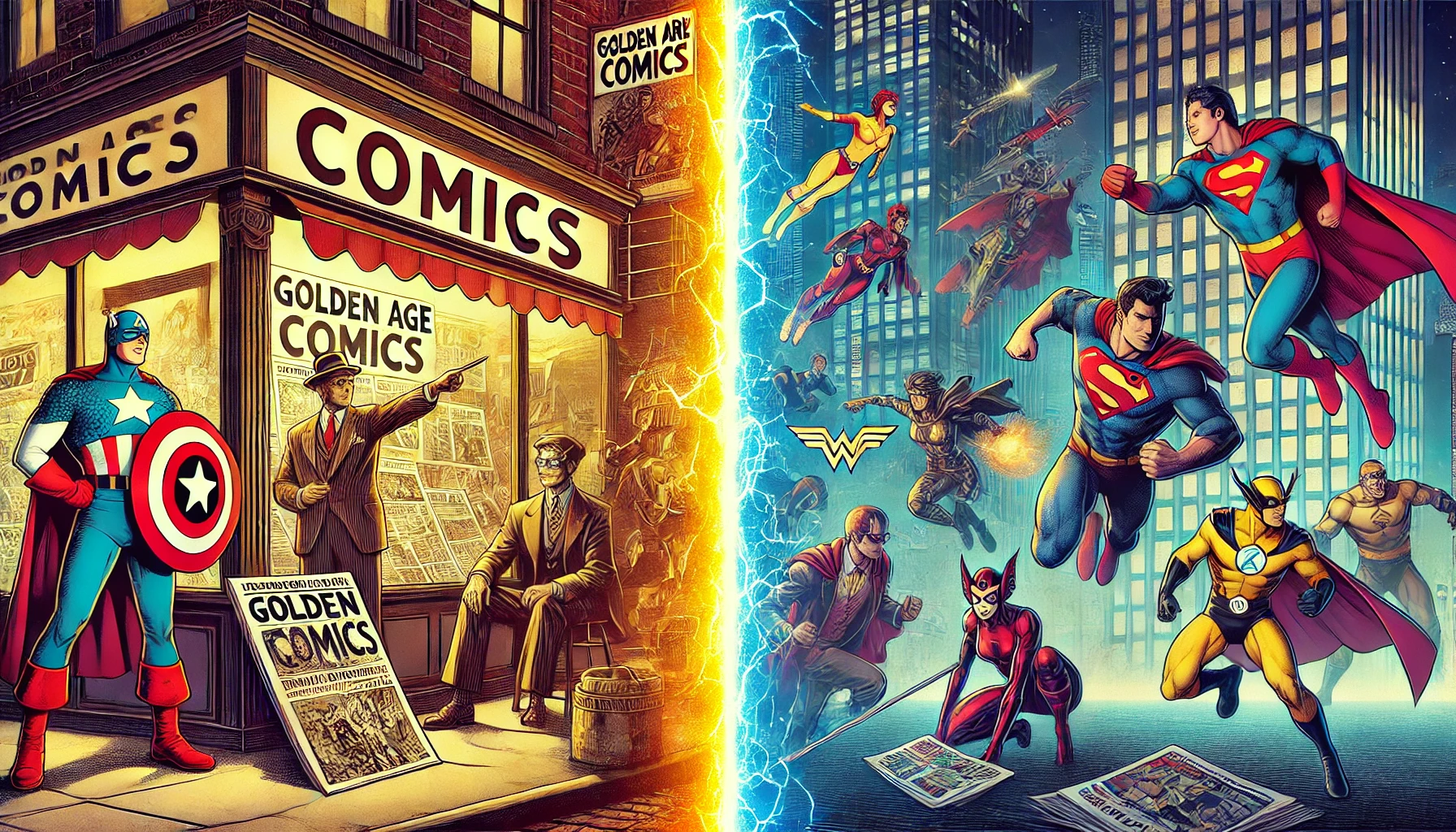
The debate over whether comic books have lost their magic and storytelling quality in the modern era compared to the revered Golden Age of Comics is one that continues to spark discussion among fans and collectors alike. To understand the argument, it’s important to explore the characteristics of both periods and evaluate the current state of the industry.
The Golden Age: A Burst of Creativity
The Golden Age of Comics, roughly spanning the late 1930s to the early 1950s, was a time of unparalleled innovation. Iconic characters such as Superman, Batman, and Wonder Woman emerged, becoming cultural touchstones. These stories were often straightforward but carried profound moral and social messages. They were accessible to readers of all ages, embodying hope, heroism, and resilience during tumultuous times like the Great Depression and World War II.
The art style was often simple yet bold, with vibrant colors and exaggerated expressions that drew readers into fantastical worlds. Creators worked under tight deadlines and with limited resources, but their passion and creativity shone through. For many fans, the Golden Age represents the epitome of imaginative storytelling, free from the commercial pressures that dominate today’s market.
The Modern Era: A Shift in Focus
Fast forward to the present, and the comic book landscape has drastically evolved. Modern comics often cater to a diverse audience, delving into complex themes such as mental health, identity, and socio-political issues. The stories are more nuanced, with layered characters and intricate plots that reflect the complexities of contemporary society. Additionally, technological advancements have elevated the art form, with hyper-detailed illustrations and innovative layouts that were unthinkable in the Golden Age.
However, some critics argue that modern comics have become too focused on catering to niche audiences and cross-media adaptation opportunities, such as film and streaming series. The influence of Hollywood is unmistakable, with many storylines feeling tailored for the big screen rather than the page. This shift has led to accusations of diluted storytelling, where commercial interests overshadow creative risks.
Comparing the Magic
So, have comics truly lost their magic? The answer may depend on one’s perspective.
- Nostalgia vs. Progress: Golden Age fans often view the era through a lens of nostalgia, cherishing the simplicity and purity of the stories. In contrast, modern comics’ evolution can be seen as progress, offering deeper engagement for readers seeking more sophisticated narratives.
- Artistic Innovation: While the Golden Age is celebrated for its pioneering spirit, modern comics have pushed the boundaries of what the medium can achieve artistically and thematically. Each era has its own “magic” tailored to its audience.
- Access and Variety: Modern comics benefit from a global marketplace and digital platforms, offering unparalleled access and variety. Yet, this abundance can sometimes dilute the perceived quality, making it harder for individual works to stand out.
The Future of Comics
The Golden Age of Comics continues to hold an almost mythical allure for its larger-than-life heroes, bold storytelling, and pioneering art that laid the foundation for the medium. The simplicity of its narratives and the vibrant creativity of its creators remain unmatched in their ability to evoke a sense of wonder and adventure. For many, these stories represent the purest essence of comic book magic—timeless and universal.
In contrast, modern comics excel in complexity and depth, offering layered narratives that reflect the multifaceted nature of today’s world. They embrace themes and art styles that challenge the traditional boundaries of the medium, catering to diverse audiences and pushing storytelling into uncharted territory. While this evolution brings a richness to the medium, it also distances itself from the unifying, almost naive charm of the Golden Age.
Ultimately, the magic of comic books lies in their ability to adapt while preserving their essence. The Golden Age may forever remain the era that captured the hearts of readers with its groundbreaking simplicity and vibrancy, but modern comics’ intricate stories and artistic ambition ensure the medium remains relevant and inspiring. Whether you’re drawn to the classic heroics of yesteryear or the nuanced tales of today, the legacy of comic books continues to thrive, offering something for every generation to cherish.
Top 10 Unbelievable Comic Book Cameos Featuring Donald Trump
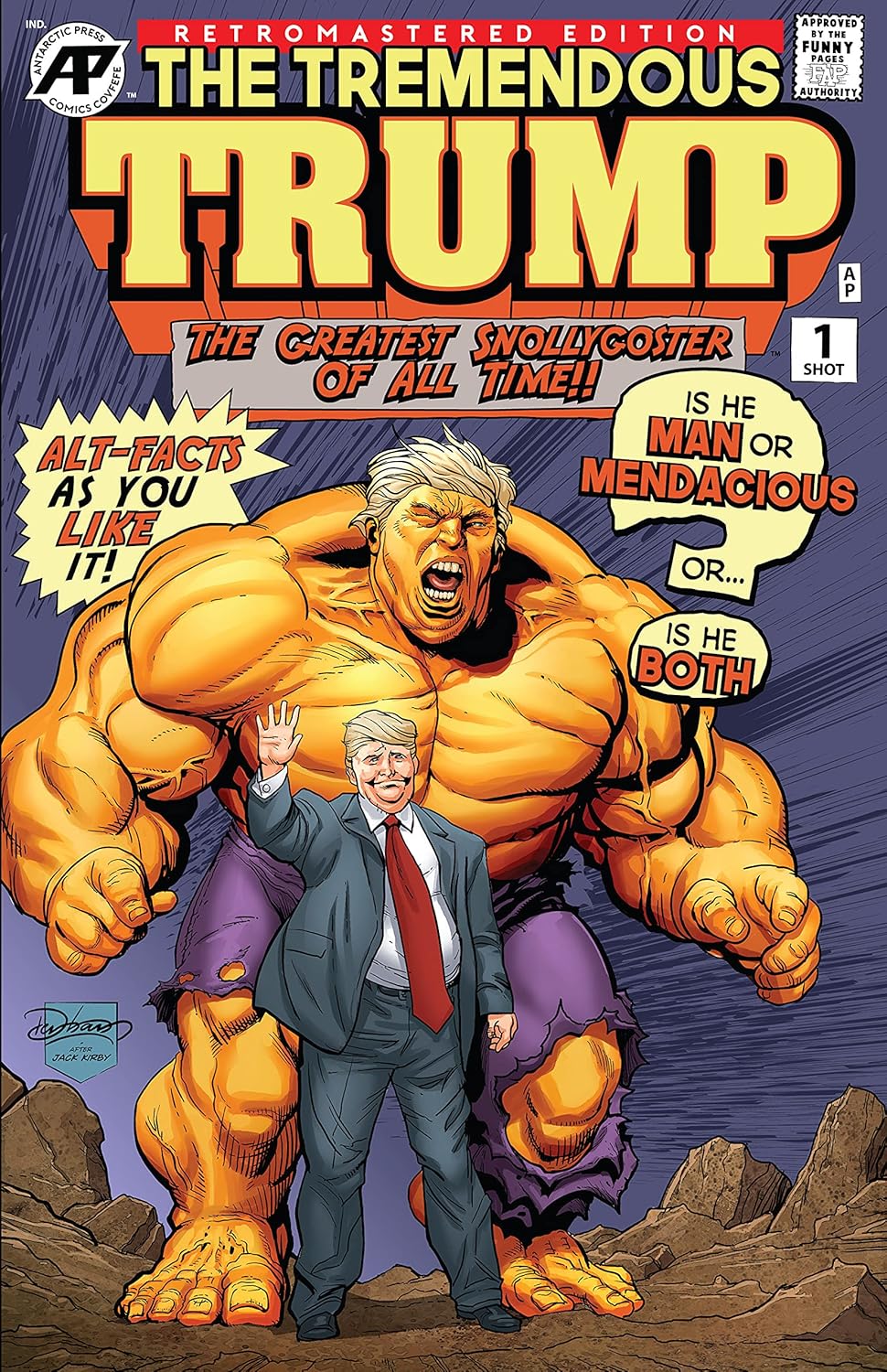
Donald Trump, the 45th and 47th President of the United States, has been a larger-than-life figure in pop culture for decades. His influence has permeated not only business and politics but also the world of comics. Whether as a direct character or a thinly veiled parody, Trump has been depicted in numerous comic books. Here’s a countdown of the top 10 comic appearances featuring or inspired by Donald Trump, complete with visuals for reference.
10. Bomb Queen: Trump Card (2020)
- Publisher: Image Comics
- Summary: This satirical graphic novel pits Bomb Queen, a notorious villain, against Donald Trump in a fictionalized presidential race. The series lampoons political extremism and media sensationalism, making it one of the boldest takes on Trump in comics.
- Image:
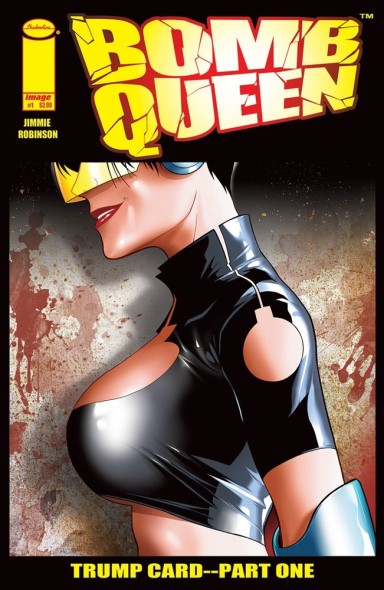
9. Savage Dragon #228 (2018)
- Publisher: Image Comics
- Summary: This issue controversially features Donald Trump as an authoritarian villain. Savage Dragon’s creators use the story to comment on political and social issues, making it a memorable moment in the series.
- Image:
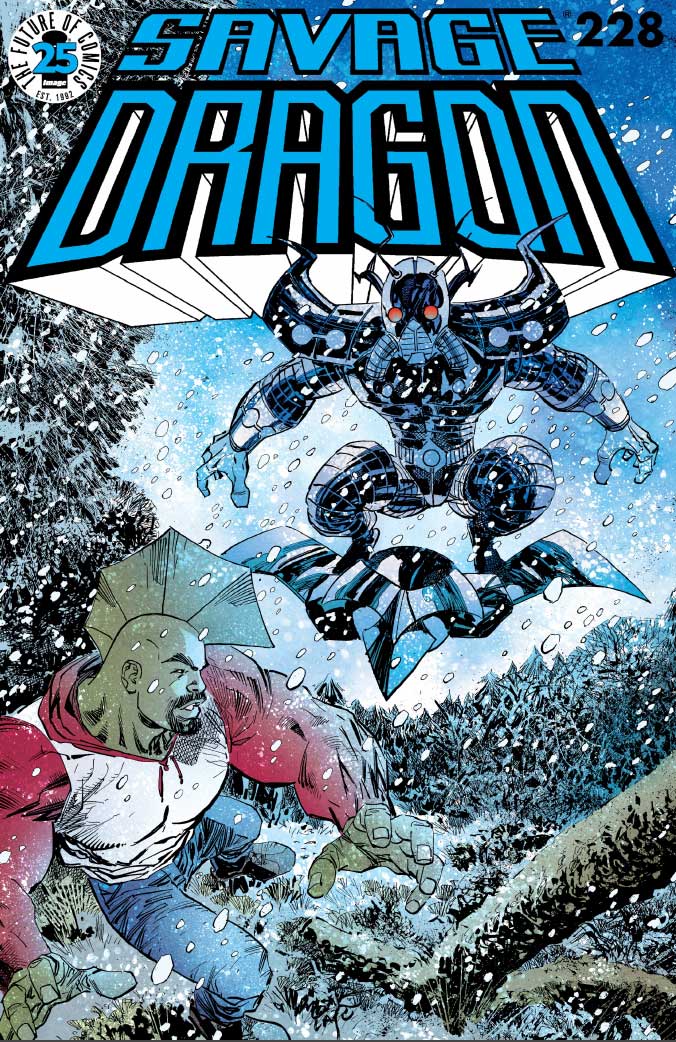
8. Faith #5 (2016)
- Publisher: Valiant Comics
- Summary: Faith, the optimistic superhero, faces challenges involving villains inspired by political corruption and power, including a Trump-like character. This issue highlights the power of hope against greed and corruption.
- Image:
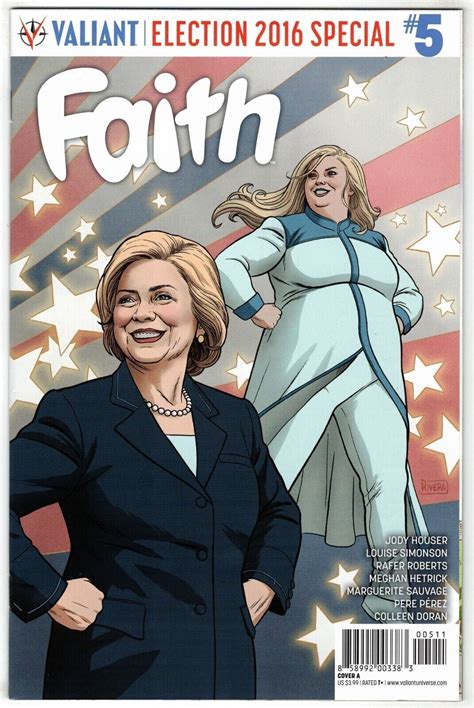
7. Prez: The First Teen President (2015 Reboot)
- Publisher: DC Comics
- Summary: This satirical series reboot includes a wealthy, manipulative corporate figure who bears a striking resemblance to Donald Trump, showcasing the intersection of politics and corporate greed.
- Image:
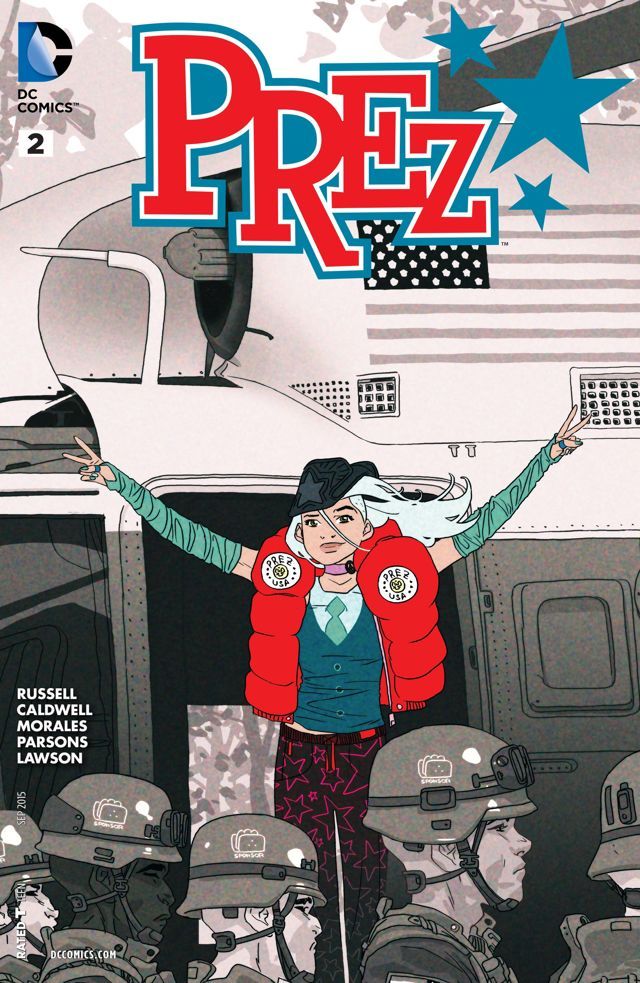
6. Simpsons Comics #103 (2004)
- Publisher: Bongo Comics
- Summary: While not directly named, this issue features a Trump-inspired character, reflecting the businessman’s growing influence during the early 2000s in a satirical Springfield setting.
- Image:
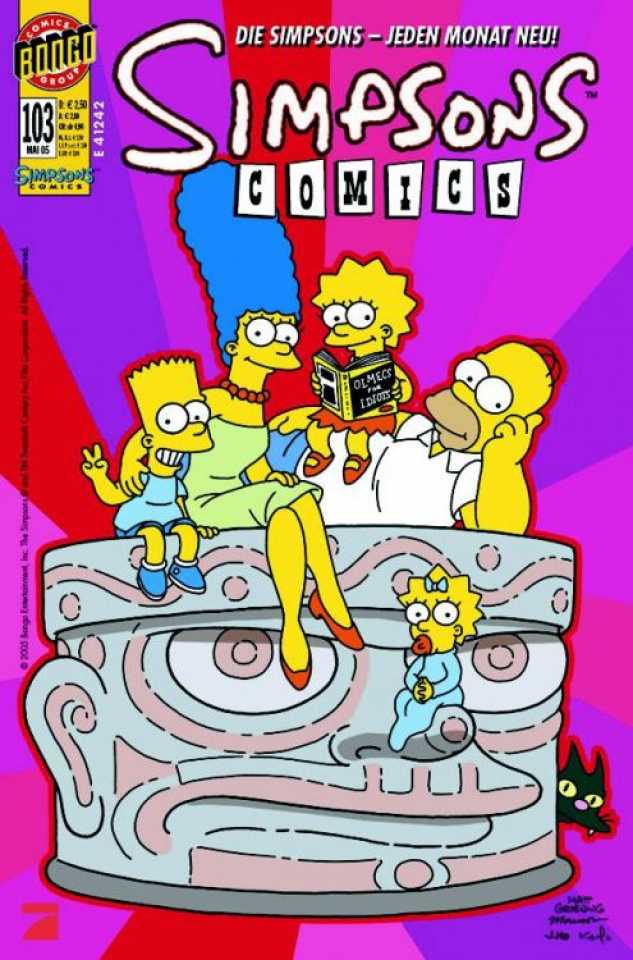
5. Deadpool: Merc with a Mouth #7 (2010)
- Publisher: Marvel Comics
- Summary: Deadpool’s zany adventure includes a character that parodies Trump, providing comic relief while also poking fun at the wealthy and powerful.
- Image:

4. Spider-Man: Election Day (2009)
- Publisher: Marvel Comics
- Summary: In this storyline, Spider-Man’s adventures intersect with Trump as the businessman celebrates a new Trump Tower groundbreaking, disrupted by superhero action.
- Image:

3. Toxic Avenger #5 (1991)
- Publisher: Marvel Comics
- Summary: Featuring the Toxic Avenger, this issue includes a parody character called “Ronald Thump,” satirizing Trump’s persona as a symbol of 1980s greed.
- Image:
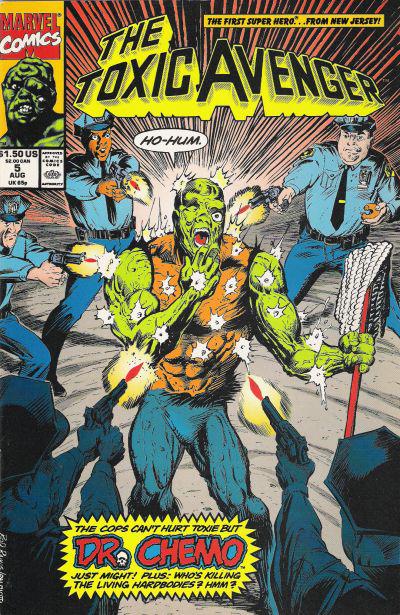
2. Hup #3 (1989)
- Publisher: Last Gasp
- Summary: Created by underground comics legend Robert Crumb, this issue features the satirical story Point the Finger, which caricatures Trump as the embodiment of greed and excess.
- Image:

1. Lex Luthor: The Unauthorized Biography (1989)
- Publisher: DC Comics
- Summary: This graphic novel reimagines Lex Luthor as a corporate tycoon heavily inspired by Donald Trump. The cover itself mirrors Trump’s The Art of the Deal, making it an iconic comic book depiction.
- Image:
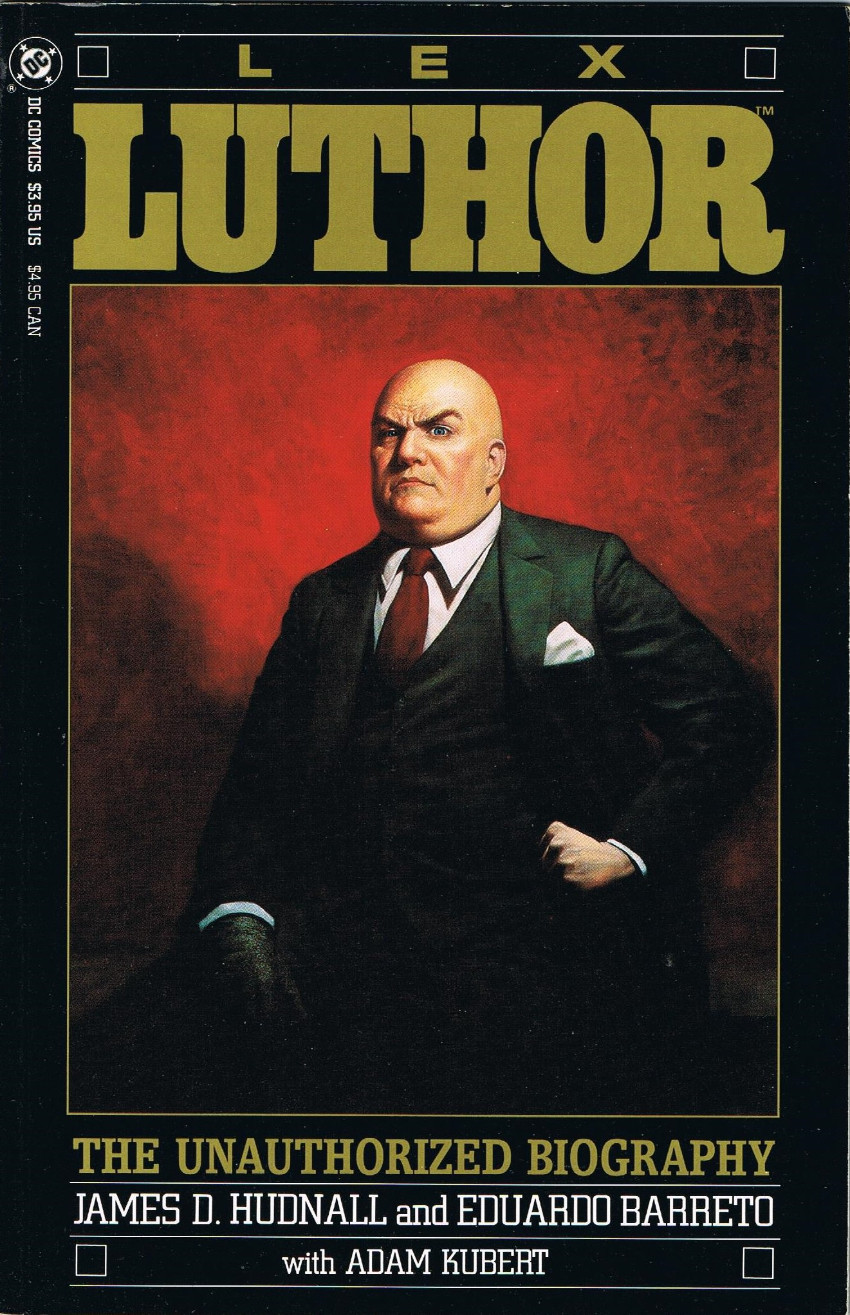
Bonus: Tremendous Trump #1 (2016)
- Publisher: Antarctic Press
- Summary: This satirical comic transforms Donald Trump into a superhero-like character, “Tremendous Trump,” who takes on political foes and caricatures of media figures. It’s a playful and over-the-top take on the Trump persona.
- Image:

Donald Trump’s appearances in traditional comic books reflect his complex and polarizing status in American culture. From satirical critiques to exaggerated portrayals, these comics offer a fascinating lens into how creators have engaged with Trump’s persona over the years.
Comics are More Than Just Paper: Why First Editions Are Gold
Comic books, often dismissed as mere children’s entertainment, have quietly emerged as a significant force in the collectibles market. First editions of these seemingly simple publications command astonishing prices, a phenomenon that can be attributed to a confluence of factors.
Firstly, comic books are unique art forms that blend captivating narratives with stunning artwork. They represent a potent distillation of popular culture, reflecting the zeitgeist of their era. From the rise of superheroes to the exploration of social and political issues, comic books have served as a mirror to society, capturing the hopes, fears, and anxieties of generations.
Secondly, the scarcity factor plays a crucial role in driving up the value of first editions. Limited print runs, coupled with the inevitable ravages of time, ensure that many early comics have simply vanished. Aging, wear and tear, and the sheer passage of time contribute to their rarity.
Furthermore, first editions often hold a special place in comic book history. They may mark the debut of iconic characters that have become cultural touchstones – think Superman, Batman, Spider-Man. They may feature groundbreaking storylines that pushed the boundaries of the medium, or showcase the work of legendary creators who revolutionized the art form.
Beyond their artistic and historical significance, comic books hold immense sentimental value for collectors. They evoke a sense of nostalgia, transporting readers back to a specific time and place. For many, collecting comics is a deeply personal journey, a way to connect with childhood memories, rediscover long-forgotten passions, and build a unique and meaningful collection.
In conclusion, the value of comic book first editions is a testament to their enduring power and cultural impact. They are not just pieces of paper; they are windows into the past, repositories of artistic brilliance, and cherished artifacts that continue to captivate and inspire collectors worldwide.
Top 15 List of Comics Submitted to CGC for Grading (Week of December 17th, 2024)
The past week saw a flurry of activity at CGC, with collectors submitting a diverse range of comics for grading. Here’s a look at the top 15 submissions, along with a brief analysis of what might be driving their popularity:
-
VeeFriends 1 (2024, VeeFriends, LLC)
- This modern collectible blends art and NFTs, tapping into the growing intersection of traditional collecting and digital assets. The X-Men homage by J. Scott Campbell adds a layer of appeal to comic book fans.
-
Star Wars: A New Hope (2018 Niue $2)
- High-grade copies of this modern release are highly sought after, likely due to its connection to the iconic Star Wars film.
-
Absolute Batman 1 (2024, D.C. Comics)
- This prestige format edition of a highly anticipated Batman story, featuring art by Nick Dragotta, is likely attracting collectors who value high-quality presentation and modern storytelling.
-
Daredevil 14 Christopher Variant Cover (2024, Marvel Comics)
- John Tyler Christopher’s variant covers are consistently popular, and the “Virgin” foil edition of this Daredevil issue adds a unique element for collectors.
-
Absolute Batman 1 Convention Foil Edition B (2024, D.C. Comics)
- Convention exclusives often carry a premium, and the foil variant of this Absolute edition is likely appealing to collectors who seek unique and limited items.
-
X-Men 1 (1991, Marvel Comics)
- A classic key issue with the first appearance of the Acolytes, this X-Men issue remains a perennial favorite among collectors.
-
X-Men 1 Special Collectors Edition (1991, Marvel Comics)
- Another key X-Men issue featuring the Acolytes and Magneto, this edition with its double gatefold cover and lack of ads is highly sought after by collectors.
-
Absolute Batman 1 Convention Foil Edition D (2024, D.C. Comics)
- Another convention exclusive foil variant, this edition with art by Mark Brooks is likely attracting collectors who appreciate his unique style.
-
Star Wars: Darth Vader – Black, White & Red 1 Dell’Otto “Virgin” Edition (2023, Marvel Comics)
- Gabriele Dell’Otto is a highly regarded artist, and the “Virgin” cover of this Star Wars issue adds to its desirability among collectors.
-
Absolute Batman 1 Variant Cover (2024, D.C. Comics)
- A variant cover by Jim Lee, a legendary artist in the comics industry, is sure to attract significant attention from collectors.
- Absolute Batman 1 Convention Foil Edition E (2024, D.C. Comics)
- Featuring art by Frank Miller and Jock, this convention exclusive foil variant taps into the popularity of these iconic artists and the Batman franchise.
- Uncanny X-Men 3 Trinity Comics Edition B (2024, Marvel Comics)
- A “Virgin” cover by Adi Granov, known for his dynamic and stylish artwork, is likely driving the interest in this Uncanny X-Men issue.
- Venom: Lethal Protector 1 (1993, Marvel Comics)
- A key issue featuring the first appearance of Venom in his own solo series, this issue with its distinctive red holo-grafx foil cover continues to be a popular target for collectors.
- Marvel Super Heroes Secret Wars 8 (1984, Marvel Comics)
- This issue features the origin of the alien symbiote that would eventually become Venom, making it a highly significant comic book in the history of the character.
- Amazing Spider-Man 361 (1992, Marvel Comics)
- A key issue with the first full appearance of Carnage, this Amazing Spider-Man issue remains a highly sought-after collectible among fans of the character.
This list highlights the most popular books submitted to CGC for the week of December 17th, 2024! As the comic book market continues to evolve, it’s essential to stay informed about the latest trends and collector demand to make informed investment decisions!
Unlocking Sonic’s Secret First Appearance: How You Could Own a Sonic First Appearance Comic for Just $5-10!

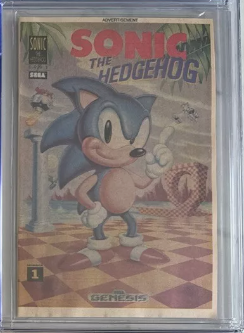
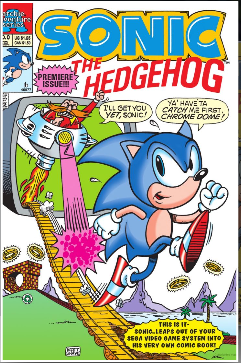
Sonic the Hedgehog’s journey to comic stardom didn’t begin with a clear, single appearance but with a trio of intriguing releases, each more elusive than the last. For collectors, Sonic’s comic debut isn’t just about one issue but a complex tapestry woven across multiple formats and publishers, each with its own unique scarcity and mystique.
The true first appearance of Sonic in comic form was actually a Glossy Mini Comic released in November 1991. This small but significant issue is revered as Sonic’s first comic-based outing, setting the stage for his place in graphic history. But what followed in December 1991 has sparked endless debates and avid hunting among collectors: a promotional supplement that appeared in several DC comics. This full-size comic insert introduced Sonic to DC’s readership, making it more accessible yet distinct enough to become a major collectible in its own right.
The DC Comics Issues Featuring the Sonic Insert
Sonic’s first comic appearance was included as an insert in the following DC comic books:
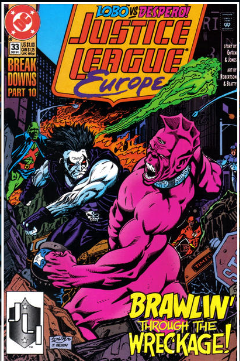
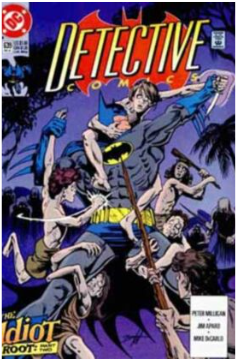
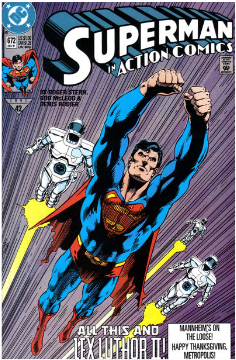
- Detective Comics #639 (April 1991)
- Justice League Europe #33 (May 1991)
- Action Comics #672 (April 1991)
These comics became collectible not just because of their regular story content, but because they featured the historic first appearance of Sonic the Hedgehog as an insert in the comic. If you’re looking for an affordable copy of the First Appearance of Sonic the Hedgehog, you can likely find these issues tucked away in the longboxes at your local comic shop and pick one up for $5 to $10.
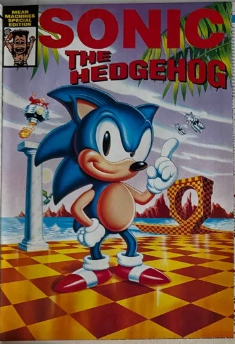
The saga doesn’t end there though. In January 1992, the most elusive of Sonic’s early appearances emerged—a large glossy pull-out within the UK’s Mean Machines magazine. Rarely seen outside of hardcore collections, this glossy insert is almost mythic in its scarcity. According to CGC population reports, only eight copies of this pull-out exist in certified collections, with none graded higher than a 9.6. Adding to its allure, most of these rare issues remain in their original magazine bindings, untouched and preserved in mint condition. For collectors, this pull-out isn’t just another Sonic appearance; it’s a holy grail, a testament to the blue blur’s enigmatic path from Sega’s consoles to comic history.
Tips for Finding the Affordable Copies
While these comics are valuable due to their connection with Sonic’s debut, there are still ways for collectors to find an affordable copy without breaking the bank. Here are some tips to help in your search:
- Search Local Shops and Events
Don’t overlook local comic book shops, second-hand bookstores, and flea markets. Sellers might not always recognize the value of these particular issues, so you could find them priced lower than expected. Keep an eye on used book sections or bargain bins where these comics might be sold alongside other DC titles from the era. - Use Online Marketplaces
Online platforms like eBay, Etsy, and Facebook Marketplace can be a goldmine for comic book collectors. You can often find these issues for sale at competitive prices, particularly if you are open to issues with a bit of wear. Setting up alerts on eBay can also help you get notified of new listings for these specific comics. - Comic Conventions
Comic conventions are another excellent place to find vintage comic books. Dealers at these events might be unaware of the insert’s significance, so it’s possible to find a deal. Searching through back-issue boxes at conventions can also be a good way to spot these inserts without paying top-tier prices. - Condition Flexibility
While mint-condition copies can demand higher prices, accepting comics with slight wear or visible creases will usually allow you to find a more affordable copy. Even comics that have been read or show signs of aging still retain value, especially if the Sonic insert is intact. - Networking with Collectors
Joining online communities or comic book groups on social media platforms can help you find people who have duplicates or are willing to sell or trade a copy of these specific DC issues. Collectors often share tips and even offer up comics at fair prices.
Final Thoughts
Sonic the Hedgehog’s first comic book appearance in Detective Comics #639, Justice League Europe #33, and Action Comics #672 is a prized item for both Sonic fans and comic book collectors. While these comics have increased in value over the years, with some patience and strategy, it’s still possible to find an affordable copy. Whether you’re a Sonic aficionado or a comic collector looking to add a historical piece to your collection, these tips should help you track down this important piece of comic book history.
Sonic’s first comic appearances are more than collectible items; they represent a captivating journey of distribution quirks, cross-promotions, and the mysteries of comic rarity that entice dedicated fans.
Beyond the Big Screen: Why Indie Comics Remain a Smart Investment Even After the Movie

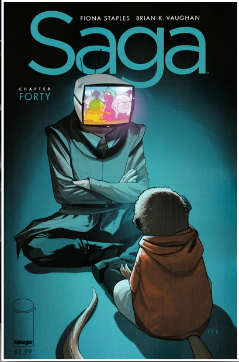
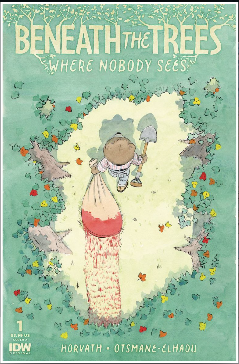
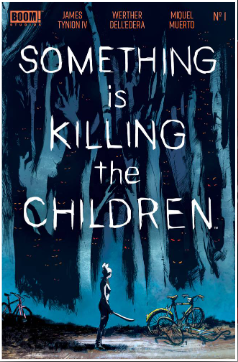
In recent years, indie comics have gained popularity and recognition, partly thanks to movie adaptations that introduce these unique stories to mainstream audiences. Unlike the familiar superhero stories dominating theaters, indie comics offer fresh perspectives, diverse characters, and niche genres that captivate loyal fans. But once a movie adaptation brings a comic into the limelight, is it still worth investing in that comic a few years later, especially if there’s no sequel on the horizon? The answer is yes—indie comics can remain highly investable long after their cinematic debut. Here’s why.
The Cultural Impact of Indie Comics on the Big Screen
Indie comics often tackle stories and themes that the mainstream industry rarely explores, making them particularly valuable to fans looking for something different. When these comics make it to the big screen, they reach audiences who may not have encountered them otherwise. This exposure creates a dedicated following, with fans eager to seek out the original source material, particularly first editions and high-grade copies. Even years later, nostalgia for the movie experience can drive fans back to these comics, turning them into collectible items that resonate deeply with their cultural legacy.
For instance, think of how certain indie adaptations like Scott Pilgrim vs. the World or 300 became cultural touchstones. Though years may have passed since these films’ releases, both the comics and their respective fandoms have remained strong. Many fans hold onto the emotional connection created by the story, leading them to pursue these comics as lasting representations of beloved narratives.
Limited Supply and Lasting Scarcity
A major factor driving the long-term value of indie comics is their scarcity. Unlike mainstream comics, indie titles typically have smaller print runs due to limited budgets and distribution. This natural scarcity means that, even without continuous media hype, these comics retain their value—or even appreciate—as time passes. Limited availability can keep demand high among collectors who appreciate the rarity of indie comics.
Additionally, condition plays a crucial role. High-grade copies, particularly those with certified grading, become even more valuable as years go by. As these comics age, fewer well-preserved copies remain, making those in mint condition highly sought after. For investors, focusing on graded first editions or pristine copies can yield better returns over time, as scarcity continues to drive up value.
The Legacy of Creators and Artistic Talent
The reputation of a comic’s creator can significantly impact its long-term value. Some creators become influential figures within the industry, and as their body of work grows, so does the value of their earlier projects. When an indie comic is adapted into a movie, it’s often a reflection of the creator’s unique storytelling or artistic talent, which resonates with audiences. Fans of the creator’s style often seek out their other works, turning the original comic into a prized collectible.
Moreover, indie comics often feature distinct artistic styles and narratives, unlike the more formulaic mainstream titles. These original artistic elements attract fans who value creativity and are likely to stay interested long after the movie’s release. This appreciation for artistry makes the comic itself an attractive investment, even without follow-up films.
Investment Potential Without a Sequel
While a planned sequel might boost interest, many indie comics thrive as collector’s items even without additional adaptations. Some comics develop a “cult status,” with dedicated fan communities that keep them relevant through online forums, social media, and conventions. These communities support ongoing interest, and the comic’s significance can grow over time.
Additionally, even if no sequels are planned, reboots and anniversary editions are common ways to renew interest in a story. When publishers release special reprints, this can reignite demand for original editions, which remain the most valuable versions in the collector’s market. Also, a popular comic may still become a franchise down the line, with spin-offs, animated adaptations, or even a reboot if fan interest remains strong.
Practical Tips for Investing in Indie Comics Post-Movie
For those interested in investing, here are some practical steps to maximize the potential value of an indie comic after a movie adaptation:
- Seek Out First Editions: First editions tend to hold the most value, especially those printed before the comic gained widespread attention. These editions are considered authentic collector’s items and are typically the most sought-after.
- Focus on High-Grade Copies: Condition is crucial. Certified high-grade copies, especially those with CGC ratings of 9.8 or higher, have a higher chance of appreciating over time. Given the natural scarcity of indie comics, mint-condition copies are rarer and more valuable.
- Follow the Creator’s Career: Pay attention to the creator’s career trajectory. If the creator becomes more influential or produces more widely known works, it can increase interest in their previous projects, driving up the value of earlier comics.
Conclusion
Indie comics offer a unique and exciting avenue for collectors and investors alike, especially when a movie adaptation brings them into the spotlight. The small print runs, distinct artistic styles, and passionate fanbases make these comics valuable beyond the typical movie hype. So, if you’re considering indie comics for long-term investment, remember: the story doesn’t end when the credits roll. Often, that’s just the beginning of their journey as cherished collectibles.
A Look at All of Wolverine’s Children and their Comic book First Appearances
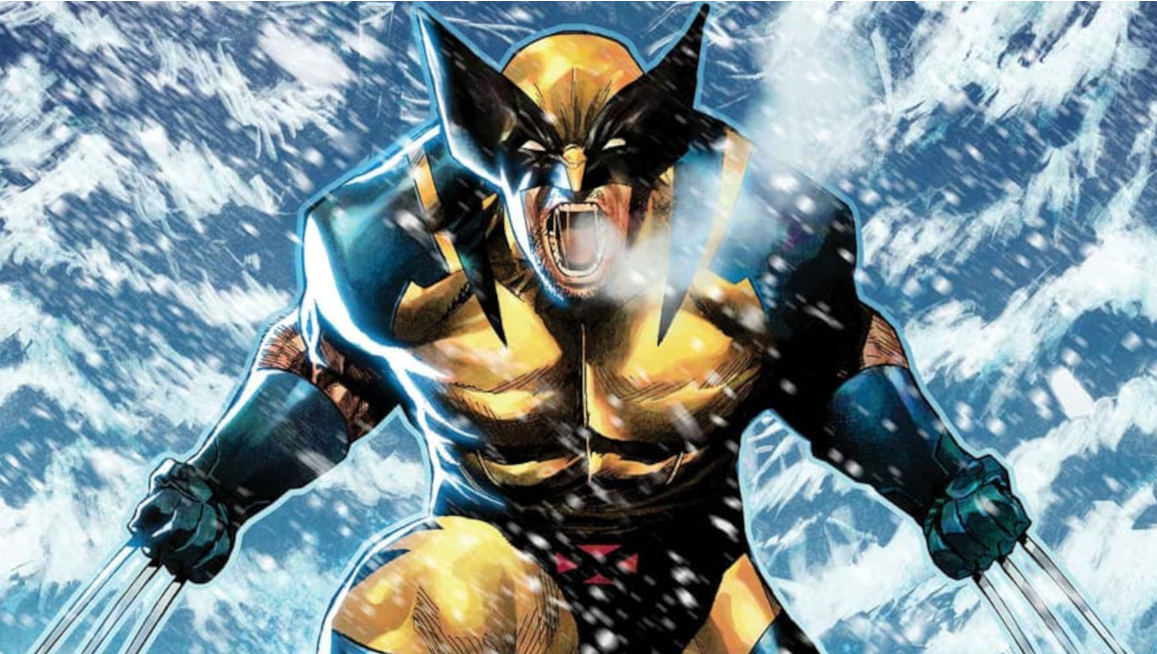
Wolverine, also known as Logan or James Howlett, is one of Marvel Comics’ most iconic characters. His long life and complex history includes a surprising number of children, both biological and adopted. We’ll delve into Wolverine’s progeny, including clones, offspring from alternate realities, and even adopted children. In chronological order by comic book release date, this article provides a comprehensive list of Wolverine’s known children, along with their comic book first appearances.
1. Amiko Kobayashi
- First Appearance: Uncanny X-Men #181 (May 1984)
- Status: Adopted Daughter
- Universe: Earth-616
Overview: While not biologically related, Amiko is an orphaned girl whom Wolverine saves and subsequently adopts. She becomes an important figure in his life, representing his softer, paternal side often overshadowed by his warrior persona.
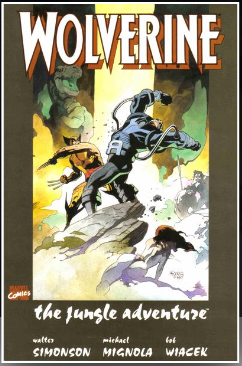
2. Erista
- First Appearance: Wolverine: The Jungle Adventure (1990)
- Mother: Gahck
- Universe: Earth-616
Overview: Erista is Wolverine’s son born in the Savage Land, a prehistoric region hidden in Antarctica. His mother, Gahck, is a native of this land. Erista’s character has not been extensively explored, leaving much of his potential untapped in the Marvel Universe.

3. Rancor
- First Appearance: Guardians of the Galaxy #8 (January 1991)
- Ancestry: Descendant of Wolverine
- Universe: Earth-691 (31st Century)
Overview: Rancor is the great-great-great granddaughter of Wolverine. She is a villainous character from the 31st century in the Guardians of the Galaxy timeline. She is a direct descendant of Wolverine and leads a group of mutants on her home planet, Haven. Rancor is obsessed with finding Wolverine, believing he is still alive, and wields one of his recovered claws as a weapon.
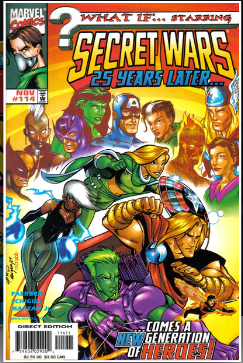
4. Torrent (Kendall Logan)
- First Appearance: What If…? #114 (September 1998)
- Mother: Ororo Munroe (Storm)
- Universe: Earth-41001
Overview: Torrent is the daughter of Wolverine and Storm in an alternate future. She inherits her mother’s weather-manipulating powers and her father’s healing factor, making her a unique and powerful mutant.

5. Rina Logan (Wild Thing)
- First Appearance: J2 #5 (February 1999)
- Mother: Elektra Natchios
- Universe: Earth-982 (MC2 Universe)
Overview: In the MC2 Universe, which explores future timelines, Rina Logan is the daughter of Wolverine and Elektra. Known as Wild Thing, she wields psychic claws and possesses enhanced physical abilities, combining the skills of both her parents.
6. Sabreclaw (Hudson Logan)
- First Appearance: J2 #8 (May 1999)
- Mother: Unrevealed
- Universe: Earth-982 (MC2 Universe)
Overview: Sabreclaw, whose real name is Hudson Logan, is the son of Wolverine in the MC2 Universe, which explores a future timeline of Marvel’s heroes. Unlike his half-sister Rina Logan (Wild Thing), Sabreclaw takes on a more antagonistic role. He inherits his father’s mutant abilities, including a regenerative healing factor, enhanced senses, and retractable claws. Sabreclaw’s demeanor and ferocity are reminiscent of Wolverine’s longtime adversary, Sabretooth, which is reflected in his name and brutal fighting style. Throughout the MC2 series, he frequently clashes with next-generation heroes such as J2 and his sister Wild Thing, embodying the struggle between his feral instincts and his familial ties.
7. Mari and Brian Logan
- First Appearance: Mutant X #28 (April 2001)
- Mother: Mariko Yashida
- Universe: Earth-1298 (Mutant X Universe)
Overview:
In the alternate reality of Earth-1298, known as the Mutant X universe, Wolverine and Mariko Yashida have two children: a daughter named Mari Logan and a son named Brian Logan. This universe offers a unique divergence from the main Marvel continuity, presenting different relationships and character developments.
Mari Logan:
Mari inherits abilities from her father, Wolverine, including a regenerative healing factor, enhanced strength, agility, and heightened senses. From her mother, Mariko Yashida, she gains a strong sense of honor, discipline, and proficiency in martial arts rooted in her Japanese heritage. Mari becomes a skilled warrior, adept at both armed and unarmed combat. Her character embodies the fusion of Wolverine’s mutant prowess and Mariko’s cultural legacy, showcasing a balance between raw power and refined skill.
Brian Logan:
Brian, Mari’s younger brother, also inherits Wolverine’s mutant traits such as accelerated healing and enhanced physical abilities. While less is detailed about Brian compared to Mari, his character adds depth to the Logan family narrative by highlighting the challenges of growing up with a legendary mutant father and navigating the complexities of their family’s legacy. Brian’s journey often involves self-discovery and the struggle to find his place amid high expectations and external conflicts.
Role in the Mutant X Universe:
In the Mutant X series, Mari and Brian find themselves in a world where familiar heroes and villains have taken on different roles and alignments. The Logan siblings are involved in significant story arcs that test their abilities and morals. They confront threats that challenge not only their physical skills but also their understanding of loyalty, family, and what it means to be a hero.
Their stories contribute to the broader themes of legacy and identity within the Mutant X universe. Through their experiences, readers explore how alternative realities shape the lives of well-known characters and their descendants. Mari and Brian’s narratives offer fresh perspectives on family dynamics, the burdens of heritage, and the pursuit of one’s own path in a complex world.
8. Wolverine/X-23 (Laura Kinney)
- First Appearance: NYX #3 (February 2004)
- Origin: Female clone created from Wolverine’s DNA
- Universe: Earth-616
Overview: Laura Kinney, also known as X-23, was created to be the perfect killing machine by the Weapon X program. Sharing Wolverine’s powers and some of his memories, she eventually seeks her own path and even adopts the Wolverine mantle. Laura’s character explores themes of identity and autonomy beyond her origins.
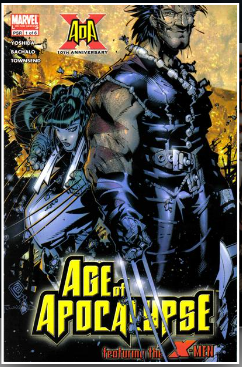
9. X-23 (Kirika Yashida)
- First Appearance: X-Men: Age of Apocalypse #2 (May 2005)
- Mother: Mariko Yashida
- Universe: Earth-295 (Age of Apocalypse)
Overview: In the dystopian Age of Apocalypse reality, Kirika is the daughter of Wolverine and Mariko Yashida. She inherits her father’s mutant abilities and becomes a member of the X-Men, fighting against Apocalypse’s regime.
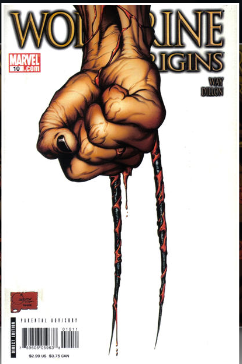
10. Daken (Akihiro)
- First Appearance: Wolverine Origins #10 (March 2007)
- Mother: Itsu
- Universe: Earth-616 (Main Marvel Universe)
Overview: Daken is the son of Wolverine and Itsu, a Japanese woman. Born in the main Marvel continuity, Daken possesses abilities similar to his father, including a regenerative healing factor and retractable claws. He is known for his complex relationship with Wolverine, often oscillating between adversary and ally.

11. Scotty and Jade Logan
- First Appearance: Wolverine Vol. 3 #66 (June 2008)
- Mother: Maureen Boucher
- Universe: Earth-807128 (Old Man Logan)
Overview: In the dystopian future of the “Old Man Logan” storyline set on Earth-807128, Wolverine has forsaken his former identity and lives under the name Logan. He is married to Maureen Boucher, a woman who brings a sense of normalcy and peace to his tumultuous life. Together, they have two children: a son named Scotty and a daughter named Jade.
Living on a humble farm, the family struggles under the oppressive rule of the Hulk Gang, descendants of Bruce Banner who have become tyrannical landlords. Logan, traumatized by past events that led him to swear off violence, endures their cruelty to protect his family. Scotty and Jade symbolize the fragile hope and domestic happiness that Logan desperately tries to preserve in a world overrun by villains.
Tragically, the Hulk Gang murders Maureen, Scotty, and Jade, shattering Logan’s attempts at a peaceful existence. This devastating loss propels him back into action, reigniting the fierce warrior within. Donning the mantle of Wolverine once more, he embarks on a quest for vengeance against those who destroyed his family.
The inclusion of Scotty and Jade adds profound emotional depth to Wolverine’s character. Their story explores themes of love, loss, and the inescapable nature of one’s past. It highlights the internal conflict between Logan’s desire for peace and the violent reality of the world he inhabits, emphasizing the sacrifices he makes and the personal costs of his long and brutal history.
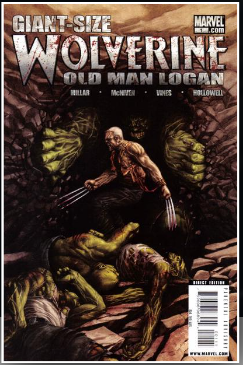
Hulk Jr. (Bruce Banner Jr.)
- First Appearance: Wolverine Vol. 3 #72 (August 2009)
- Biological Parents: Bruce Banner (Hulk) and an unnamed woman (implied to be a relative)
- Adopted Father: Wolverine (Logan)
- Universe: Earth-807128 (Old Man Logan)
Overview:
In the bleak, dystopian future of the “Old Man Logan” storyline set on Earth-807128, Wolverine encounters Bruce Banner Jr., also known as Hulk Jr. After the Hulk Gang—a group of gamma-irradiated descendants of the original Hulk, Bruce Banner—murders Wolverine’s family, Logan embarks on a path of vengeance. He confronts and eliminates the members of the Hulk Gang, including the elder Bruce Banner himself.
Amid the aftermath, Wolverine discovers Hulk Jr., an innocent infant and the sole surviving member of the Hulk lineage. Recognizing the child’s vulnerability and the potential to break the cycle of violence, Wolverine decides to adopt Hulk Jr. as his own son. He names him Bruce Banner Jr. in honor of his biological father but is determined to raise him differently.
Wolverine and Hulk Jr. set out across the desolate landscape of the Wastelands, aiming to find a better life and perhaps restore some semblance of hope to a broken world. Hulk Jr. possesses latent gamma-induced abilities inherited from his father, which begin to manifest as he grows older. These powers include superhuman strength, durability, and the signature green hue associated with gamma radiation.
Their journey together adds a layer of redemption and humanity to Wolverine’s character, showcasing his capacity for compassion and paternal care despite the harsh realities they face. Hulk Jr.’s presence symbolizes the possibility of change and the hope that the next generation can learn from the mistakes of the past.
Hulk Jr. later appears in subsequent storylines, such as “Dead Man Logan,” where his upbringing continues under the guidance of other heroes like Danielle Cage. His development highlights themes of legacy, responsibility, and the enduring impact one individual can have on the future.

12. Ultimate Wolverine (James Hudson jr.)
-
- First Appearance: Ultimate X #1 (February 2010)
- Mother: Unrevealed
- Universe: Earth-1610 (Ultimate Marvel Universe)
Overview:
Jimmy Hudson is the son of Wolverine in the Ultimate Marvel Universe (Earth-1610). Raised by James Hudson and his wife Heather—who were close friends of Wolverine—Jimmy grew up believing they were his biological parents. It wasn’t until after Wolverine’s death that Jimmy discovered his true heritage through a holographic message left by Logan.
Jimmy possesses abilities similar to his father’s, including a regenerative healing factor and retractable bone claws. Unlike Wolverine, Jimmy’s claws are coated in a golden, organic metal, enhancing their durability and cutting power. This unique feature sets him apart and suggests a natural mutation rather than artificial enhancement like Wolverine’s adamantium claws.
Characterized by a wild and somewhat reckless personality, Jimmy grapples with his identity upon learning of his true parentage. His journey involves coming to terms with his father’s complex legacy while forging his own path. He becomes a key figure in the mutant community, especially in the aftermath of the “Ultimatum” event that drastically reduces the mutant population.
Jimmy joins forces with other young mutants, such as Kitty Pryde, to navigate a world that is increasingly hostile toward their kind. His struggles highlight the challenges of legacy, acceptance, and the quest for belonging in a fractured society.
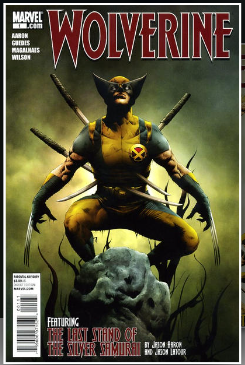
13. The Mongrels (Gunhawk, Cannonfoot, Shadowstalker, Fire Knives, and Saw Fist)
- First Appearance: Wolverine Vol. 4 #1 (September 2010)
- Mothers: Various (Unrevealed)
- Universe: Earth-616 (Main Marvel Universe)
Overview: The Mongrels are a team of formidable mercenaries assembled by the shadowy organization known as the Red Right Hand, whose sole purpose is to make Wolverine suffer as retribution for the pain he has inflicted over his long life. The group consists of members like Gunhawk, Cannonfoot, Shadowstalker, Fire Knives, and Saw Fist. Unbeknownst to Wolverine, each member of the Mongrels is one of his illegitimate children, born from various relationships throughout his lifetime. The Red Right Hand manipulates events so that Wolverine ends up confronting and killing the Mongrels, only to later discover their true identities. This revelation delivers a profound emotional blow, adding a tragic layer to Wolverine’s history and exploring themes of vengeance, remorse, and the unintended consequences of his past actions.
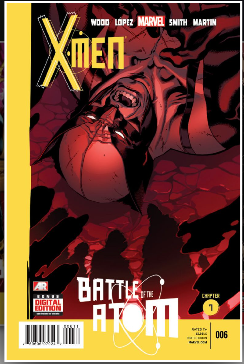
14. Raze Darkholme
- First Appearance: X-Men Vol. 4 #6 (May 2013)
- Mother: Mystique (Raven Darkhölme)
- Universe: Earth-13729 (Alternate Future)
Overview:
Raze Darkholme is the son of Wolverine (James “Logan” Howlett) and Mystique (Raven Darkhölme) from an alternate future timeline known as Earth-13729. Debuting in X-Men Vol. 4 #6, Raze inherits a formidable combination of his parents’ mutant abilities. From Mystique, he gains shapeshifting powers, allowing him to alter his appearance and mimic others seamlessly. From Wolverine, he inherits a regenerative healing factor, enhanced senses, and retractable claws.
Raze is a complex and antagonistic character who travels back in time to the present day of the main Marvel Universe (Earth-616). His goals often involve disrupting the timeline for his own benefit, posing significant threats to the X-Men and other heroes. Raze’s actions are driven by a desire to reshape the world according to his own vision, reflecting the darker aspects of both his parents’ legacies.
The character of Raze adds depth to Wolverine’s lineage by exploring the consequences of his relationships and the potential ramifications across different timelines. His presence introduces challenging moral dilemmas, particularly concerning time travel and the ethics of altering reality. Raze’s interactions with the X-Men highlight themes of identity, destiny, and the complex nature of familial ties within the mutant community.
By embodying traits from both Wolverine and Mystique, Raze serves as a powerful reminder of the far-reaching impact of their choices. His story expands the narrative possibilities within the X-Men universe, emphasizing how the actions of one generation can profoundly affect the next.
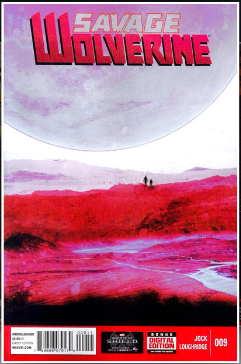
15. Kouen
- First Appearance: Savage Wolverine #9 (November 2013)
- Origin: Clone of Wolverine
- Mother: Not Applicable
- Universe: Earth-13119 (Alternate Reality)
Overview:
Kouen is a clone of Wolverine created by an unknown organization in the alternate reality of Earth-13119, as depicted in Savage Wolverine #9. Unlike other clones, Kouen was implanted with several of Wolverine’s memories, causing him to grapple with issues of identity and purpose. This blending of memories leads Kouen to question his own existence and the ethical implications of being a clone engineered for unknown intentions.
Possessing the same mutant abilities as Wolverine—including a regenerative healing factor, enhanced senses, and retractable claws—Kouen is a formidable individual. His creation reflects the recurring theme in Wolverine’s life of being used as a weapon by external forces. Kouen’s struggle mirrors Wolverine’s own battles with manipulation and control but adds another layer as he contends with secondhand memories and a life that was never truly his own.
Kouen’s story explores deep philosophical questions about what it means to be human, the nature of identity, and the morality of cloning. His character adds complexity to Wolverine’s legacy by introducing the concept of clones not just as copies but as individuals with their own consciousness and struggles. Through Kouen, the narrative delves into the consequences of playing with genetics and memory, highlighting the personal turmoil that can result from such experiments.
16. Cameron Pryde
-
- First Appearance: Years of Future Past #1 (June 2015)
- Biological Parents: Kitty Pryde and Colossus (Piotr Rasputin)
- Adopted Father: Wolverine (James “Logan” Howlett)
- Universe: Earth-1191 (Alternate Future)
Overview:
In the dystopian future of Earth-1191, as depicted in the Years of Future Past miniseries, Cameron is the son of Kitty Pryde and Colossus. Raised in a world where mutants are oppressed and hunted, Cameron faces the harsh realities of survival from a young age. After the death of his father, Colossus, Wolverine adopts Cameron, giving him the surname Howlett and stepping into a paternal role.
Although Cameron does not possess any of Wolverine’s mutant abilities—such as a healing factor or retractable claws—he benefits from Wolverine’s extensive experience and training. Wolverine teaches him combat skills, tactical thinking, and survival strategies, molding Cameron into a skilled fighter capable of defending himself and others.
Cameron’s unique heritage combines the intangible phasing powers of his mother, Kitty Pryde, and the organic steel transformation abilities of his father, Colossus. However, in this storyline, Cameron does not exhibit any mutant powers, which adds layers of complexity to his character as he navigates a dangerous world without the advantages many mutants possess.
Together with his sister, Christina Pryde, who does manifest mutant abilities, Cameron becomes an integral part of the mutant resistance. They work alongside other surviving mutants to challenge the oppressive regime that seeks to eradicate their kind. Cameron’s journey explores themes of identity, family bonds, and the struggle to find one’s place in a world that fears and persecutes mutants.
His relationship with Wolverine highlights the mentor-protégé dynamic and adds emotional depth to both characters. Wolverine’s guidance provides Cameron with the tools he needs to survive, while Cameron offers Wolverine a sense of purpose and a connection to the next generation.
Cameron’s story enriches the broader narrative of Wolverine’s extended family across alternate realities. It emphasizes the impact that mentorship and chosen family can have, especially in times of adversity. Through his courage and determination, Cameron embodies the hope that even in the darkest timelines, individuals can make a difference.
Christina is briefly mentioned here but I am wondering what happened to her while Wolverine was raising Cameron? I am not finding that anywhere.
17. Rien
- First Appearance: Marvel Comics Presents Vol. 3 #6 (May 2019)
- Mother: Sylvie
- Universe: Earth-616 (Main Marvel Universe)
Overview:
Rien is the daughter of Wolverine (James “Logan” Howlett) and a French sorceress named Sylvie. Introduced in Marvel Comics Presents Vol. 3 #5, Rien brings a unique blend of mutant and magical heritage to the Marvel Universe. She inherits her father’s regenerative healing factor and enhanced physical abilities, alongside her mother’s mastery of the mystic arts.
Rien wields mystical claws composed of magical energy, a fusion of Wolverine’s signature weaponry and sorcery. Her abilities make her a formidable opponent against both physical and supernatural threats. The character’s storyline begins during World War II when Wolverine and Sylvie unite to combat a demonic entity known as the Truth. Decades later, the Truth resurfaces, and Rien emerges to help her father confront this resurrected menace.
Throughout her journey, Rien grapples with her dual heritage, striving to balance the warrior instincts inherited from Wolverine with the arcane knowledge passed down by Sylvie. Her relationship with Wolverine evolves from initial unfamiliarity to a deep familial bond as they fight side by side. Rien’s presence adds a new dimension to Wolverine’s legacy, exploring themes of identity, destiny, and the complexities of parent-child relationships within the context of heroism.
By integrating elements of magic into Wolverine’s traditionally mutant-focused narrative, Rien expands the possibilities for storytelling within the X-Men universe. Her character underscores the rich tapestry of Marvel’s interconnected worlds, highlighting how diverse backgrounds and abilities can come together to face common threats.
Conclusion
Wolverine’s legacy within the Marvel Universe is as complex as it is enduring. His journey from a solitary warrior to a mentor and father figure has woven a rich tapestry of narratives that explore the depths of identity, redemption, and the bonds that define us. Through his myriad offspring—ranging from clones like Laura Kinney (X-23) and Gabby Kinney (Scout) to children from alternate realities like Raze Darkholme and Rien—readers witness the far-reaching impact of his actions across time and space.
These characters not only expand the mythos of Wolverine but also challenge him in profound ways. They embody facets of his personality, confront his past mistakes, and often compel him to confront aspects of himself he’d rather keep hidden. Whether it’s Daken’s struggle with darkness, Jimmy Hudson’s quest for identity, or Rien’s balance of mutant powers and magic, each offspring adds a unique thread to the narrative fabric of Wolverine’s world.
The diverse abilities and backgrounds of his children also reflect the limitless possibilities within the Marvel Multiverse. They showcase how legacy can be both a burden and a gift, prompting questions about nature versus nurture and the true meaning of heroism. As they navigate their own paths—sometimes aligning with Wolverine, other times opposing him—they enrich the overarching themes of family, destiny, and the enduring fight between good and evil.
Wolverine’s relationships with his children force him to evolve from a lone survivor into a protector and guide. This evolution adds layers of vulnerability and responsibility to a character often defined by his resilience and ferocity. It’s in these relationships that we see Logan at his most human—grappling with fatherhood, mentorship, and the hope that his progeny might forge better futures than his own tumultuous past allowed.
In exploring the lives of Wolverine’s children, we delve deeper into the heart of what makes the character so compelling. Their stories are not just extensions of his legacy but are powerful narratives in their own right—stories of struggle, growth, and the search for identity in a world that is often unforgiving. As the Marvel Universe continues to expand, these characters stand poised to carry forward the spirit of Wolverine, ensuring that his impact resonates for generations to come.
Top 15 List of Comics Submitted to CGC for Grading (Week of August 27th, 2024)
This week collectors sent a diverse selection of comics to CGC for grading, with a mix of modern and classic titles. Here’s a breakdown of the top 15 submissions:
- Yaira 1 (2024, Rippaverse Comics): This new series has quickly gained attention due to its unique premise and intriguing characters. The first issue’s various covers are particularly sought after by collectors.
- Yaira 1 Variant Cover C (2024, Rippaverse Comics): With its embossed foil cover, this variant offers a unique aesthetic and is a popular choice among collectors.
- Yaira 1 Variant Cover B (2024, Rippaverse Comics): This variant cover, with its distinct design, has also attracted attention from collectors.
- Yaira 1 Variant Cover D (2024, Rippaverse Comics): As the final variant cover for the first issue of Yaira, this option may be particularly sought after by collectors who want to complete their set.
- House of Slaughter 25 Yoon Variant Cover B (2024, Boom! Studios): As a Boom! Direct Reserve exclusive with a red foil logo, this variant is a highly collectible item for fans of the series.
- Hellverine 1 Young Variant Cover (2024, Marvel Comics): This variant cover, featuring a unique artistic style, has attracted interest from collectors looking for something different.
- Amazing Spider-Man 50 Christopher Variant Cover (2024, Marvel Comics): With contributions from multiple artists, this variant offers a diverse and visually appealing take on the classic character.
- Marvel Super Heroes Secret Wars: Facsimile Edition 8 Foil Edition (2024, Marvel Comics): This facsimile edition, featuring a foil treatment, is a popular choice for collectors seeking a high-quality reproduction of a classic comic.
- X-Men 1 (1991, Marvel Comics): The first appearance of the Acolytes, coupled with the unique cover design, makes this a desirable comic for collectors.
- Marvel Super Heroes Secret Wars 8 (1984, Marvel Comics): As the origin of the alien symbiote that becomes Venom, this issue holds significant historical importance.
- Amazing Spider-Man 300 (1988, Marvel Comics): The origin and first full appearance of Venom, along with the last appearance of the black costume, make this a highly sought-after issue.
- Wolverine Limited Series 1 (1982, Marvel Comics): As the first solo Wolverine comic, this issue is a must-have for fans of the character.
- New Mutants 98 (1991, Marvel Comics): The first appearance of Deadpool, Gideon, and Copycat, combined with the departure of Rictor, makes this a significant issue in the X-Men mythology.
- Amazing Spider-Man 252 (1984, Marvel Comics): Known for its ties to Marvel Team-Up #141 as the first appearance of the black costume, this issue is a popular choice for collectors.
- Spawn 1 (1992, Image Comics): The first appearance of Spawn, along with the iconic “i” logo and pull-out poster, has made this a classic comic book.
This list highlights the most popular books submitted to CGC for the week of August 27th, 2024! As the comic book market continues to evolve, it’s essential to stay informed about the latest trends and collector demand to make informed investment decisions!
Top 15 List of Comics Submitted to CGC for Grading (Week of August 20th, 2024)
This week collectors sent a diverse selection of comics to CGC for grading, with a mix of modern and classic titles. Here’s a breakdown of the top 15 submissions:
1. Yaira 1 Variant Cover C (2024, Rippaverse Comics): This could be hot due to the “first appearance” factor. Stephanya, Yanessa, Yantoni, and Magus Nuummite are all brand new characters, and their debut issue might be desirable for fans following the story’s development. The embossed foil cover adds a collectible element. 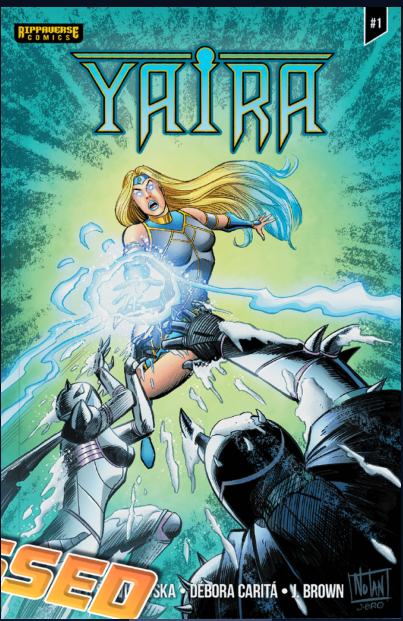
2. Ultimate Spider-Man 4 JScottCampbell.com Edition D (2024, Marvel Comics): This variant features a homage cover to Amazing Spider-Man #601, a popular issue. The “Virgin” cover (without trade dress elements) might be attractive to some collectors seeking a cleaner aesthetic. 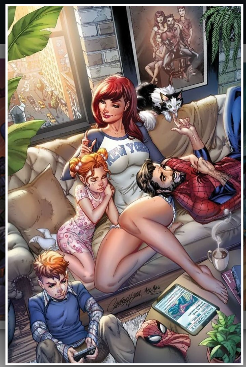
3. Hellverine 1 Young Variant Cover (2024, Marvel Comics): This could be a good investment due to the “first appearance” potential, depending on how the “Hellverine” character resonates with readers. 
4. Wolverine Limited Series 1 (1982, Marvel Comics): A classic key issue featuring Wolverine’s first solo comic and a cameo by Yukio on the last page. Prices for high-grade copies of this issue tend to be strong. 
5. Marvel Super Heroes Secret Wars 8 (1984, Marvel Comics): This issue holds historic weight as it marks the origin of the alien symbiote that eventually becomes Venom. 
6. Spider-Gwen: The Ghost-Spider 1 Campbell Variant Cover B (2024, Marvel Comics): Another JScottCampbell variant, this time for Spider-Gwen #61, might be sought after by fans of the artist’s style and the character’s growing popularity.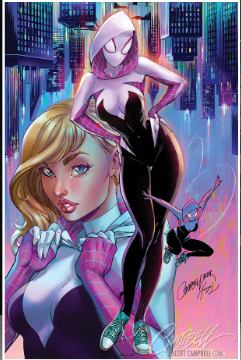
7. Batman/Superman: World’s Finest 21 Celebrity Authentics Edition (2024, D.C. Comics): This variant features a photo cover of actor Val Kilmer, who portrayed Batman in the 1995 film. This could appeal to fans of the movie or Kilmer himself.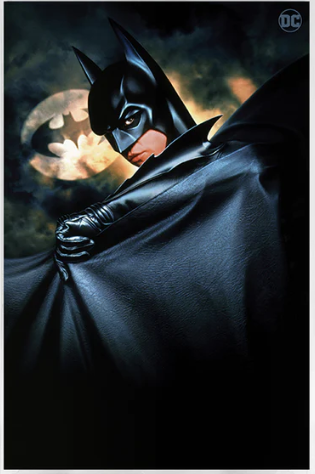
8. Amazing Spider-Man 300 (1988, Marvel Comics): This key issue features the origin and full first appearance of Venom (Eddie Brock). High-grade copies consistently fetch high prices.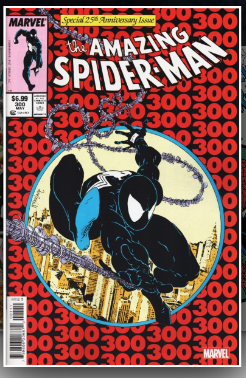
9. Wolverine 88 Deluxe Edition (1994, Marvel Comics): While not a first appearance, this issue features notable appearances by Deadpool, Weapon X, and Copycat. Additionally, the Marvel subscription insert might add value for completionists. 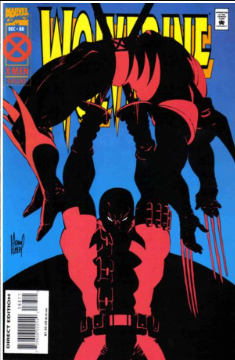
10. Spawn 1 (1992, Image Comics): A timeless classic, Spawn #1 boasts the first appearance of the popular anti-hero. This issue remains highly collectible, especially in high grades. 
11. Spider-Man 1 Silver Edition (1990, Marvel Comics): This reprint of Amazing Fantasy #15 features a classic Spider-Man cover with the Lizard as the villain. While a reprint, it might still be desirable for some collectors seeking a more affordable copy of the iconic original. 
12. New Mutants 98 (1991): This issue marks the first appearance of Deadpool (Wade Wilson) and introduces Gideon and Copycat (Vanessa Carlysle) as Domino. The departure of Rictor from the team adds another layer of significance. 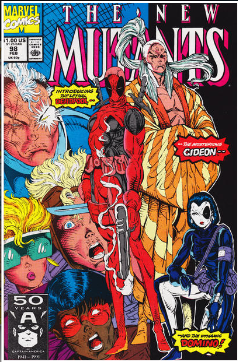
13. Amazing Spider-Man 252 (1984): This issue features a controversial origin for the black costume, later revealed to be a symbiote. It also pays homage to the cover of Amazing Fantasy #15. While not the definitive “first appearance” of the black suit, it remains a significant story element. 
14. Wolverine Limited Series 4 (1982): Another issue in Wolverine’s first solo series, this might be desirable for collectors seeking a complete run or specific storylines. 
15. Amazing Spider-Man 361 (1992): This key issue features the first full appearance of the psychotic villain Carnage (Cletus Kasady). Carnage’s popularity continues to fuel demand for this issue. 
Which one is your favorite? Do you have any of these?
Top 15 List of Comics Submitted to CGC for Grading (Week of August 13th, 2024)
The comic book market remains red-hot, as evidenced by the influx of high-profile titles submitted to CGC for grading last week. Here’s a breakdown of the top 15 books that have collectors and investors buzzing:
- Edge of Spider-Verse 3 Woods Variant Cover A (2024, Marvel Comics): This book has quickly become a coveted item due to its stunning Star Wars #42 homage cover by Skottie Young. The limited availability and high demand have driven up prices, making it a prime candidate for grading.

- Marvel Super Heroes Secret Wars 8 (1984, Marvel Comics): The introduction of the alien symbiote that would eventually become Venom in this issue has solidified its status as a cornerstone of Marvel history. Collectors are eager to obtain high-grade copies of this iconic book.

- Wolverine Limited Series 1 (1982, Marvel Comics): Marking Wolverine’s first solo adventure and featuring a cameo by Yukio, this issue has seen a resurgence in popularity. As one of the most beloved characters in comics, Wolverine keys continue to be highly sought after.

- Venom: Lethal Protector 1 (1993, Marvel Comics): The debut of Venom in his own series, coupled with a Spider-Man appearance and eye-catching red holo-grafx foil cover, makes this book a must-have for any Venom fan.

- New Mutants 98 (1991, Marvel Comics): The first appearance of Deadpool, along with the introductions of Gideon and Copycat, has propelled this issue to the top of many collectors’ wish lists. The departure of Rictor adds another layer of intrigue to this already high-demand book.

- Spawn 1 (1992, Image Comics): The iconic debut of Spawn and the second appearance of the Image “i” logo have made this book a perennial favorite. The included pull-out Spawn poster further enhances its collectible value.

- Amazing Spider-Man: Facsimile Edition 252 Foil Edition (2024, Marvel Comics): This facsimile edition of a classic Spider-Man story has attracted attention due to its foil cover and limited availability. Collectors of modern variants are eagerly pursuing this book.

- Energon Universe 2024 Special 1 Carnivore Comics Edition (2024, Image/Skybound): Featuring art by a trio of superstar artists, this “Virgin” cover variant has quickly become a hot commodity. The limited print run and high-profile creative team have generated significant buzz.
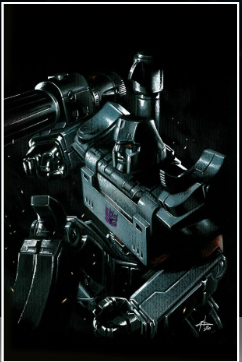
- Teenage Mutant Ninja Turtles 150 Crain Variant Cover (2024, IDW Publishing): Another “Virgin” cover variant, this TMNT issue has captured the attention of fans and collectors alike. The iconic characters and Clayton Crain’s stunning artwork have created a perfect storm for high demand.
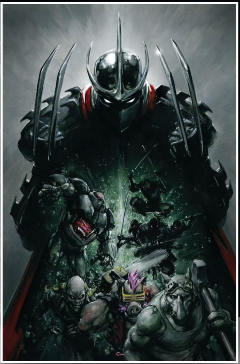
- X-Men 1 (1991, Marvel Comics): Introducing the Acolytes and featuring four interconnected covers, this issue has become a sought-after collectible. The complex cover artwork and significance of the characters within X-Men lore have contributed to its popularity.

- Uncanny X-Men 266 (1990, Marvel Comics): The first full appearance of Gambit and a supporting role for Mystique make this issue a key book for X-Men collectors. The growing popularity of Gambit has driven up demand for this title.

- Deadpool & Wolverine: WWIII 1 Crain “Virgin” Edition (2024, Marvel Comics): The combination of popular characters and a Clayton Crain “Virgin” cover has made this book a must-have for many collectors. The limited availability of this variant has also contributed to its high demand.

- Wolverine 1 (1988, Marvel Comics): Featuring Wolverine as Patch and a John Byrne pin-up, this issue has experienced a resurgence in popularity. The iconic character and classic artwork have made it a desirable addition to any comic collection.
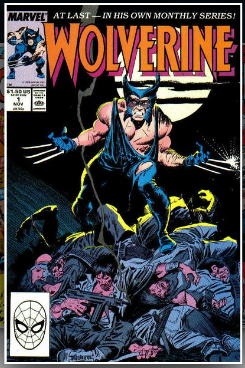
- Teenage Mutant Ninja Turtles 149 Crain Variant Cover (2024, IDW Publishing): Another “Virgin” cover by Clayton Crain, this TMNT issue has generated significant interest among collectors. The combination of popular characters and stunning artwork has driven demand for this book.
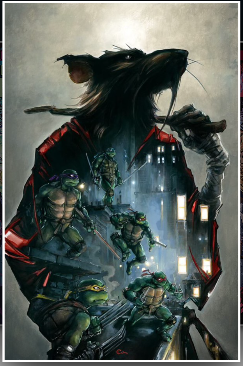
- Star Wars 1 (1977, Marvel Comics): The first issue of the original Star Wars comic book series remains a cornerstone of the comic book market. Its iconic status and enduring popularity ensure that it will always be a sought-after collectible.

This list highlights the most popular books submitted to CGC for the week of August 13th, 2024! As the comic book market continues to evolve, it’s essential to stay informed about the latest trends and collector demand to make informed investment decisions!
Top 15 List of Comics Submitted to CGC for Grading (Week of July 30th, 2024)
Top 15 Books Submitted to CGC Last Week
The comic book market is always buzzing with excitement, and the recent surge in submissions to CGC is a testament to that. Let’s dive into the top 15 books that have caught collectors’ eyes this past week.
1. Star Trek: Countdown 1 (2024, IDW Publishing): This reprint featuring a Chris Pine photo cover has generated significant interest. Given the enduring popularity of the Star Trek franchise, coupled with the allure of a photo cover, this book is likely to be a hot commodity among collectors.
2. Star Trek: Countdown 1 Variant Cover C (2024, IDW Publishing): Another Star Trek: Countdown variant, this one with a different Chris Pine photo cover, has also seen a surge in submissions. The potential for different photo variations on the same book can drive collector interest.
3. Star Trek: Countdown 1 Variant Cover B (2024, IDW Publishing): Yet another Star Trek: Countdown variant, this time with a third Chris Pine photo cover. The popularity of the franchise and the potential for collecting all three variants is likely driving submissions.
4. Doom 1 Variant Edition (2024, Marvel Comics): Featuring an MF DOOM epigraph, this variant has captured the attention of comic book fans and hip-hop enthusiasts alike. The book’s connection to the influential rapper is a major draw for collectors.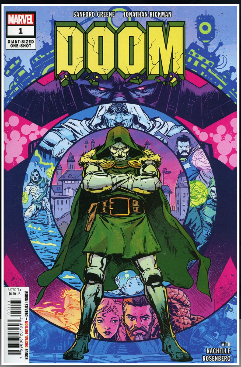
5. X-Men 1 (1991, Marvel Comics): A classic X-Men issue featuring the first appearance of the Acolytes, this book is a staple in many comic book collections. Its iconic status and potential for high-grade copies make it a desirable item for grading.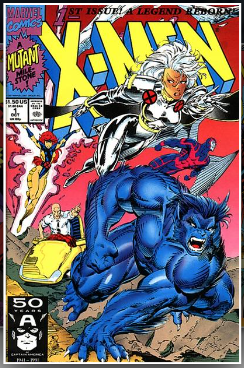
6. Eros/Psyche 2 Variant Cover D (2021, Ablaze): This variant’s homage to the “Pulp Fiction” movie poster has made it a standout among collectors. The book’s unique cover and potential for strong grades contribute to its popularity.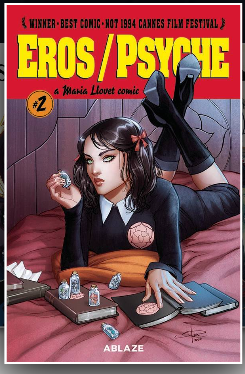
7. Ultimate X-Men 1 (2024, Marvel Comics): The relaunch of the Ultimate X-Men series has sparked renewed interest in the franchise. As the first issue in the series, this book has attracted attention from collectors looking to build complete sets.
8. Marvel Super Heroes Secret Wars 8 (1984, Marvel Comics): The origin of the Venom symbiote is a major plot point in comic book history, making this issue highly sought after. Its significance in the Marvel universe drives collector interest.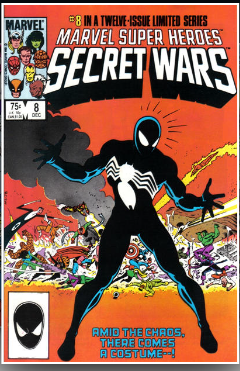
9. TMNT: The Last Ronin 1 (2020, IDW Publishing): This popular Teenage Mutant Ninja Turtles story featuring additional art by Ben Bishop has maintained its popularity. The book’s strong storytelling and artistic contributions make it a desirable item for grading.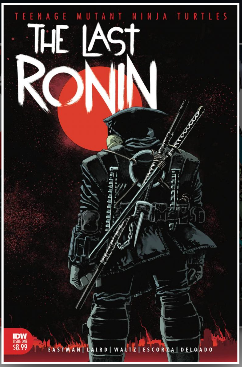
10. Wolverine Limited Series 1 (1982, Marvel Comics): The first solo Wolverine comic, featuring a cameo by Yukio, is a cornerstone of the character’s history. Its iconic status and potential for high-grade copies make it a popular choice for submission.
11. Amazing Spider-Man 300 (1988, Marvel Comics): The origin and first full appearance of Venom, along with other notable elements, make this issue a coveted item. Its historical importance and potential for high grades drive collector interest.
12. New Mutants 98 (1991, Marvel Comics): Featuring the first appearances of Deadpool, Gideon, and Copycat, this issue is a key book for X-Men fans. Its significance in the Marvel universe and potential for high grades make it a desirable item.
13. Uncanny X-Men 266 (1990, Marvel Comics): The first full appearance of Gambit, along with a Mystique appearance, makes this issue a sought-after addition to any X-Men collection. Its historical importance and potential for high grades contribute to its popularity. 
14. Spider-Man 13 (1991, Marvel Comics): Featuring the appearance of Morbius and a homage to Spider-Man #1, this issue has gained attention from collectors. Its connection to iconic characters and potential for high grades make it a desirable item.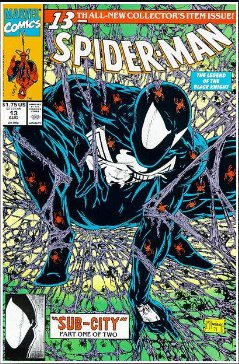
15. Ultimate Black Panther 1 (2024, Marvel Comics): The launch of a new Black Panther series has generated excitement among fans. As the first issue, this book has attracted attention from collectors looking to build complete sets.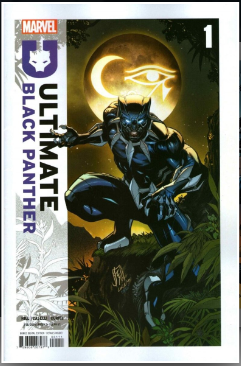
This list highlights the most popular books submitted to CGC for the week of July 30th, 2024!
Top 15 List of Comics Submitted to CGC for Grading (Week of July 23rd, 2024)
- Yaira 1 (2024, Rippaverse Comics): This first issue is generating significant buzz due to its introduction of key characters Stephanya, Yanessa, Yantoni, and Magus Nuummite. As the series gains traction, early issues are likely to become highly sought after.

- Yaira 1 Variant Cover D (2024, Rippaverse Comics): Another entry from the Yaira universe, this variant cover featuring the same first appearances is already turning heads. Variant covers often command higher prices, especially when they introduce important characters.
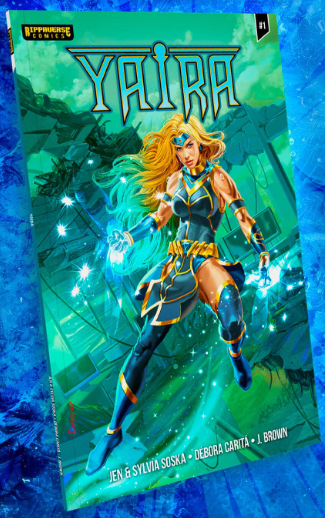
- Batman/Superman: World’s Finest 21 Celebrity Authentics Edition B (2024, D.C. Comics): The inclusion of a Sasha Calle photo cover on this variant makes it an instant collectible for fans of the DCEU. Celebrity-related items tend to be highly popular in the collectibles market.

- Superman 6 Hero Initiative Edition (2023, D.C. Comics): With its unique partial blank cover, this edition offers a distinctive look that collectors may find appealing. The Hero Initiative connection also adds a charitable element, potentially boosting interest.
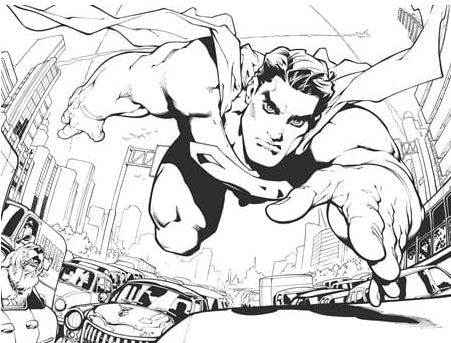
- Ultimate Spider-Man 4 Giang “Virgin” Edition (2024, Marvel Comics): Virgin covers are always hot commodities, and this Giang-illustrated edition is no exception. The popularity of Spider-Man ensures that this book will be on many collectors’ radars.
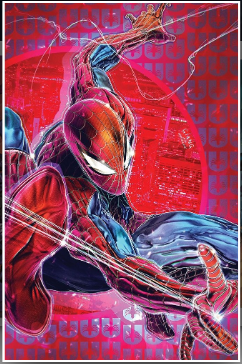
- Wolverine Limited Series 1 (1982, Marvel Comics): This classic issue marks Wolverine’s first solo adventure and includes an early appearance of Yukio. As a foundational book in the character’s history, it’s no surprise to see it on this list.

- Spider-Man 1 Silver Edition (1990, Marvel Comics): Featuring the Lizard’s first appearance, this Silver Edition is a must-have for any serious Spider-Man collector. The classic art and iconic villain combination make it a perennial favorite.

- Wolverine 1 (1988, Marvel Comics): Wolverine’s debut as Patch, coupled with a John Byrne pin-up, makes this issue a highly desirable item for fans of the character.

- Godzilla 70th Anniversary nn Abominable Toys Edition (2024, IDW Publishing): This special anniversary edition, featuring art from a variety of talented creators, is likely to appeal to both Godzilla fans and art collectors.
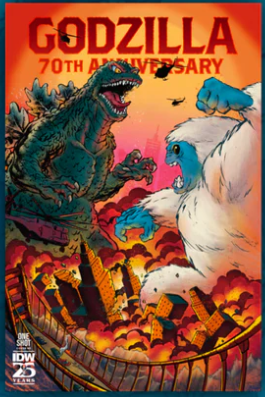
- Spawn 1 (1992, Image Comics): The first appearance of Spawn, with its iconic image and pull-out poster, remains a cornerstone of the Image Comics universe and a highly sought-after collectible.

- Uncanny X-Men 266 (1990, Marvel Comics): The first full appearance of Gambit, along with a Mystique appearance, makes this issue a key collectible for X-Men fans.

- Biker Mice From Mars 1 Variant Cover G (2024, Oni Press): This “Akira” homage variant is likely to attract attention from fans of both properties.

- Spawn 1 Mexican Edition (2024, Kamite): The “virgin” foil cover of this Spawn reprint offers a unique collectible opportunity for fans of the character.
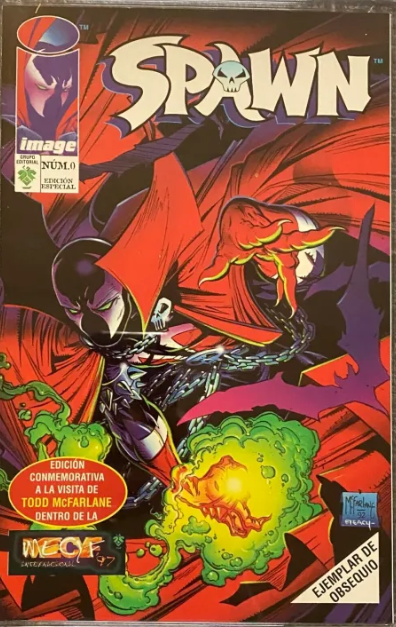
- Amazing Spider-Man: Facsimile Edition 300 Foil Edition (2023, Marvel Comics): A facsimile edition of a classic issue with a foil cover is a recipe for collector interest.
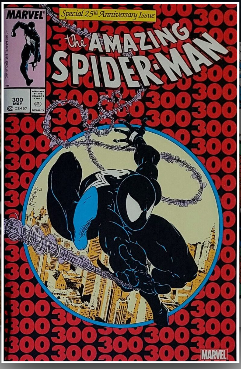
- X-Men 1 (1991, Marvel Comics): Introducing the Acolytes and featuring multiple cover variants, this issue has the potential to be a significant collectible for X-Men fans.

This week’s CGC submissions showcase a diverse range of titles, from new and upcoming series to classic comics. Whether you’re a long-time collector or a newcomer to the hobby, there’s something to pique everyone’s interest on this list.
Key Comics of Deadpool & Wolverine – Spoilers Ahead!
Deadpool & Wolverine is Awesome! Let’s explore the comic book First Appearances of the film’s diverse cast. These issues are the ones to watch!
Main Characters and Their Comic Book First Appearances:
- Wade Wilson / Deadpool (Ryan Reynolds)
- First Appearance: The New Mutants #98 (February 1991)
- Key Issue: This comic marks the first appearance of Deadpool, bringing his unique blend of humor and action to the Marvel Universe.
- Logan / Wolverine (Hugh Jackman)
- First Appearance: The Incredible Hulk #180 (cameo) and #181 (full appearance) (October/November 1974)
- Key Issue: Wolverine’s first full appearance in The Incredible Hulk #181 is a milestone, introducing one of Marvel’s most beloved characters.
- Cassandra Nova (Emma Corrin)
- First Appearance: New X-Men #114 (July 2001)
- Key Issue: This issue introduces Cassandra Nova, a powerful and malevolent figure in the X-Men series.
- Laura / X-23 (Dafne Keen)
- First Appearance: NYX #3 (February 2004)
- Key Issue: X-23’s debut highlights her as a formidable clone and successor to Wolverine.
- Happy Hogan (Jon Favreau)
- First Appearance: Tales of Suspense #45 (September 1963)
- Key Issue: Happy Hogan’s introduction in the early Iron Man comics marks his longstanding role in Tony Stark’s life.
- Vanessa (Morena Baccarin)
- First Appearance: New Mutants #98 (February 1991) (Vanessa Carlysle/Copycat)
- Key Issue: This issue is notable not just for Deadpool, but also for introducing Vanessa Carlysle, aka Copycat.
- Peter (Rob Delaney)
- First Appearance: X-Force #116 (July 2001) (Peter Wisdom)
- Key Issue: Peter Wisdom’s introduction adds depth to the X-Force narrative with his unique abilities.
- Blind Al (Leslie Uggams)
- First Appearance: Deadpool #1 (January 1997)
- Key Issue: Blind Al’s complex relationship with Deadpool begins in this solo series debut.
- Elektra (Jennifer Garner)
- First Appearance: Daredevil #168 (January 1981)
- Key Issue: Elektra’s first appearance is a classic, introducing the lethal assassin tied to Daredevil’s story.
- Blade (Wesley Snipes)
- First Appearance: The Tomb of Dracula #10 (July 1973)
- Key Issue: The debut of Blade, Marvel’s iconic vampire hunter, is a must-read for fans of supernatural comics.
- Gambit (Channing Tatum)
- First Appearance: Uncanny X-Men #266 (August 1990)
- Key Issue: Gambit’s first appearance showcases his charm and unique abilities as a member of the X-Men.
- Johnny Storm (Chris Evans)
- First Appearance: Fantastic Four #1 (November 1961)
- Key Issue: The debut of the Fantastic Four, including Johnny Storm, revolutionized the superhero genre.
- Pyro (Aaron Stanford)
- First Appearance: The Uncanny X-Men #141 (January 1981)
- Key Issue: Pyro’s debut during the “Days of Future Past” storyline is a key moment in X-Men history.
- Sabretooth (Tyler Mane)
- First Appearance: Iron Fist #14 (August 1977)
- Key Issue: Sabretooth’s introduction pits him against Iron Fist, highlighting his ferocity.
- Negasonic Teenage Warhead (Brianna Hildebrand)
- First Appearance: New X-Men #115 (June 2001)
- Key Issue: This issue introduces the explosive mutant with a memorable name.
- Yukio (Shioli Kutsuna)
- First Appearance: Wolverine #1 (September 1982)
- Key Issue: Yukio’s debut in Wolverine’s solo series adds to his rich character tapestry.
- Colossus (Stefan Kapicic)
- First Appearance: Giant-Size X-Men #1 (May 1975)
- Key Issue: Colossus’s first appearance is a landmark issue that introduced a new era of X-Men.
- Lady Deadpool (Blake Lively)
- First Appearance: Deadpool: Merc with a Mouth #7 (February 2010)
- Key Issue: This issue introduces Wanda Wilson, the female counterpart to Deadpool.
- Deadpool 2099 (Unknown)
- First Appearance: Deadpool #6 (March 2016)
- Key Issue: The first appearance of Deadpool 2099, Warda Wilson. The issue’s solicit synopsis asks questions about the new Merc, including who she is, why she would want to inherit Wade Wilson’s codename, and if there are still chimichangas in 2099.
- Shatterstar (Lewis Tan)
- First Appearance: The New Mutants #99 (March 1991)
- Key Issue: Shatterstar’s introduction brings an interdimensional warrior into the X-Men universe.
- Headpool (Nathan Fillion)
- First Appearance: Deadpool: Merc with a Mouth #7 (February 2010)
- Key Issue: The debut of Headpool, a decapitated zombie Deadpool head, adds to the character’s bizarre adventures.
- Cowboypool (Matthew McConaughey)
- First Appearance: Deadpool: Merc with a Mouth #7 (February 2010)
- Key Issue: Cowboypool is another unique addition, blending Western flair with Deadpool’s antics.
- Kidpool (Inez Reynolds)
- First Appearance: Prelude to Deadpool Corps #2 (March 2010)
- Key Issue: a new student of the Xavier Orphanage for Troubled Boys, he didn’t fit in well with the other super powered students due to his troubling and juvenile tendencies
- Dogpool (Peggy the Dog)
- First Appearance: Prelude to Deadpool Corps #3 (March 2010)
- Key Issue: Deadpool recruited him for the Deadpool Corps, where he becomes close friends with Kidpool.
- Juggernaut (Aaron Reed)
- First Appearance: Uncanny X-Men #12 (July 1965)
- Key Issue: Juggernaut is a mutant who has superhuman strength and durability, he first appears as an enemy of the X-Men.
- Toad (Daniel Medina Ramos)
- First Appearance: Uncanny X-Men #4 (January 2003)
- Key Issue: Toad is most often depicted as an enemy of the X-Men and was originally a hunchbacked mutant with superhuman leaping ability.
- Azazel (Jason Flemyng)
- First Appearance: Uncanny X-Men #428 (August 2003)
- Key Issue: Azazel’s debut reveals Nightcrawler’s demonic lineage.
- Yuriko Oyama / Deathstrike (Kelly Hu)
- First Appearance: Daredevil #197 (August 1983)
- Key Issue: Lady Deathstrike’s first appearance showcases her deadly cyborg enhancements.
Conclusion
While not an exhaustive list, exploring the first appearances of these characters not only enhances our appreciation for their cinematic portrayals but also underscores the rich history and evolution of the Marvel Universe. As we enjoy Deadpool & Wolverine, these key issues serve as a testament to the enduring legacy of these beloved characters. Happy reading and collecting!
Top 15 List of Comics Submitted to CGC for Grading (Week of July 16th, 2024)
These comics are sending a buzz through the collecting community this week! Here are the top 15 comics submitted to CGC (Comic Guaranty Company) for grading for the week of July 16,2024. From highly anticipated first appearances to iconic character milestones, this list offers a glimpse into the trends shaping the collector market and could hold the key to unearthing your next prized possession. Buckle up and get ready to discover comics with investment potential, nostalgic blasts from the past, and hidden gems waiting to be unearthed!
- Yaira 1 Variant Cover C (2024, Rippaverse Comics)
- This is a potential first appearance comic. The characters Stephanya, Yanessa, Yantoni, and Magus Nuummite could be valuable down the line if the series gains popularity.
- The embossed foil cover adds a collectible element for variant cover enthusiasts.

- Wolverine Limited Series 1 (1982, Marvel Comics)
- This is the first solo Wolverine comic, making it highly sought after by collectors.
- The cameo appearance of Yukio on the last page adds another layer of interest for fans.

- Ultimate X-Men 1 Sad Lemon Comics Edition (2024, Marvel Comics)
- This features a “virgin” cover, meaning it lacks the usual text and logos, creating a unique and potentially more valuable version.
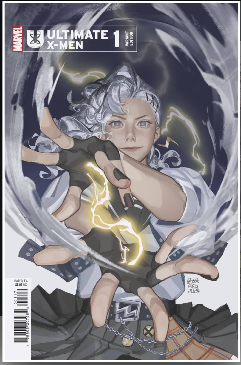
- Wolverine 1 (1988, Marvel Comics)
- This is the first appearance of Wolverine as Patch, a lesser-known alias that some collectors might find interesting.
- The back cover pin-up by John Byrne adds value for fans of the artist.

- Batman Beyond: Facsimile Edition 1 Foil Edition (2024, D.C. Comics)
- This is a special foil edition reprint of the popular Batman Beyond #1 (1999).
- Facsimile editions can be collectible for fans who want a high-quality copy of the original without the high price tag.
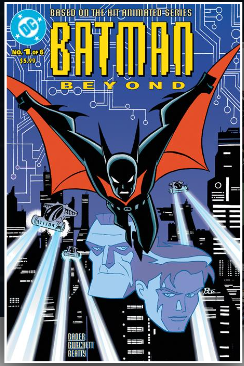
- Uncanny X-Men 266 (1990, Marvel Comics)
- This features the first full appearance of Gambit, a charismatic X-Men character with a dedicated following.
- Mystique also appears in this issue, adding to its collectability.

- New Mutants: Facsimile Edition 98 Foil Edition (2024, Marvel Comics)
- This is a foil edition reprint of New Mutants #98 (1991), a significant issue due to reasons mentioned in #13 below.

- Marvel Super Heroes Secret Wars 8 (1984, Marvel Comics)
- This issue features the origin of the alien symbiote that eventually becomes Venom, a fan-favorite villain.

- Amazing Spider-Man 300 (1988, Marvel Comics)
- This is the origin and first full appearance of Venom (Eddie Brock).
- This issue also marks the last appearance of Spider-Man’s black costume.

10. Something is Killing the Children 36 Artgerm Collectibles Edition (2024, Boom! Studios)
- This features a red foil logo variant cover by popular artist Artgerm, making it a desirable edition for collectors.

- X-Men 141 (1981, Marvel Comics)
- This features the first appearances of Rachel (Phoenix II), Avalanche, Destiny, Pyro, and an alternate future X-Men team.
- Mystique, Blob, and Robert Kelly also make their first appearances in this issue
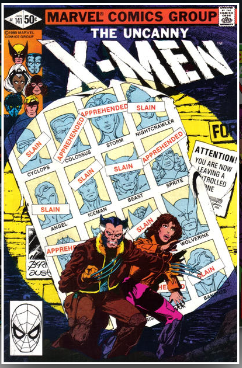
- Star Wars 1 (1977, Marvel Comics)
- This is the first part of the comic book adaptation of the original Star Wars: A New Hope movie.
- Star Wars comics, especially early issues, tend to be popular among collectors due to the franchise’s enduring legacy.
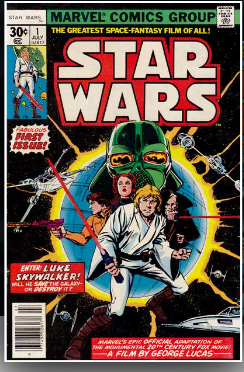
- New Mutants 98 (1991, Marvel Comics)
- This is the first appearance of Deadpool (Wade Wilson).
- This character’s immense popularity in recent years has driven up the value of his first appearance.

- Uncanny X-Men 221 (1987, Marvel Comics)
- This features the first appearance of Mister Sinister (Nathaniel Essex), a complex villain with a long history in the X-Men universe.
- The Marauders also appear in this issue, adding to its significance for X-Men fans.
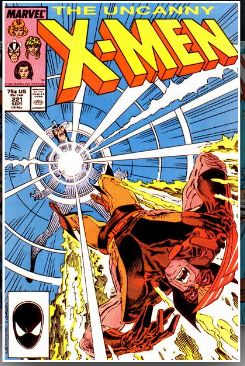
- Nightwing 114 Sampere Variant Cover (2024, D.C. Comics)
- This features a variant cover by artist Javier Sampere, potentially sought after by fans who prefer this artwork over the standard cover.
- With a reported high submission percentage (4,100%), this variant might be tougher to find in a high graded condition in the future, making pristine copies more valuable.
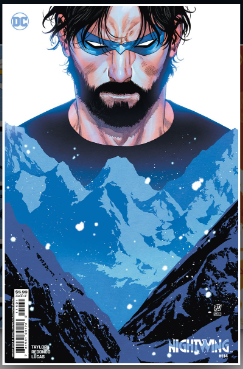
Which one is your favorite? Do you own any of these? Please let us know in the comments.
Top 15 List of Comics Submitted to CGC for Grading (Week of July 9th, 2024)
These comics are sending a buzz through the collecting community this week! Here are the top 15 comics submitted to CGC (Comic Guaranty Company) for grading for the week of July 9,2024. From highly anticipated first appearances to iconic character milestones, this list offers a glimpse into the trends shaping the collector market and could hold the key to unearthing your next prized possession. Buckle up and get ready to discover comics with investment potential, nostalgic blasts from the past, and hidden gems waiting to be unearthed!
-
Web of Spider-Man 1 (2024, Marvel Comics)
- Greg Capullo cover
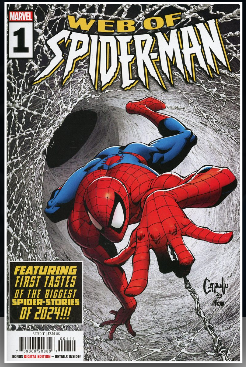
- Greg Capullo cover
-
Wolverine Limited Series 1 (1982, Marvel Comics)
- This comic marks the first solo Wolverine story, featuring a cameo by Yukio on the last page. Wolverine’s enduring popularity keeps key issues like this in demand.

- This comic marks the first solo Wolverine story, featuring a cameo by Yukio on the last page. Wolverine’s enduring popularity keeps key issues like this in demand.
-
Uncanny X-Men 191 (1985, Marvel Comics)
- This issue boasts the first appearance of Nimrod, a powerful mutant villain. Additionally, it features appearances by the New Mutants, Spider-Man, the Avengers, Doctor Strange, Selene, and Kulan Gath.

- This issue boasts the first appearance of Nimrod, a powerful mutant villain. Additionally, it features appearances by the New Mutants, Spider-Man, the Avengers, Doctor Strange, Selene, and Kulan Gath.
-
X-Men 1 (1991, Marvel Comics)
- This features the first appearance of the Acolytes, a mutant religious group. Notably, there are four different covers for this issue that combine to form one larger image, adding to the collectibility for some.

- This features the first appearance of the Acolytes, a mutant religious group. Notably, there are four different covers for this issue that combine to form one larger image, adding to the collectibility for some.
-
Dragon 359 (2007, Paizo Publishing)
- This is the final issue of the popular Dragon magazine in comic book format, featuring a showdown between the powerful magic users Elminster and Raistlin. The magazine’s ending could make this a desirable piece for fans.
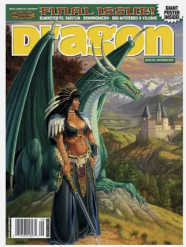
- This is the final issue of the popular Dragon magazine in comic book format, featuring a showdown between the powerful magic users Elminster and Raistlin. The magazine’s ending could make this a desirable piece for fans.
-
Star Wars 1 (1977, Marvel Comics)
- This is the first part of the comic book adaptation of the original Star Wars movie, “A New Hope.” The enduring popularity of Star Wars keeps its related media collectible.

- This is the first part of the comic book adaptation of the original Star Wars movie, “A New Hope.” The enduring popularity of Star Wars keeps its related media collectible.
-
Marvel Super Heroes Secret Wars 8 (1984, Marvel Comics)
- This issue features the origin story of the alien symbiote that eventually bonds with Eddie Brock to become Venom. Venom’s popularity makes this a key issue for collectors.

- This issue features the origin story of the alien symbiote that eventually bonds with Eddie Brock to become Venom. Venom’s popularity makes this a key issue for collectors.
-
Uncanny X-Men 266 (1990, Marvel Comics)
- This features the first full appearance of Gambit, a popular X-Men character known for his charm and playing cards. Additionally, Mystique makes an appearance.

- This features the first full appearance of Gambit, a popular X-Men character known for his charm and playing cards. Additionally, Mystique makes an appearance.
-
Amazing Spider-Man 252 (1984, Marvel Comics)
- This issue is tied with Marvel Team-Up #141 for the first appearance of Spider-Man’s black costume, which eventually becomes associated with Venom. It also features an homage cover to Amazing Fantasy #15.

- This issue is tied with Marvel Team-Up #141 for the first appearance of Spider-Man’s black costume, which eventually becomes associated with Venom. It also features an homage cover to Amazing Fantasy #15.
10. Spawn 1 (1992, Image Comics) * This is the first appearance of Spawn (Al Simmons), the anti-hero known for his dark and gothic themes. This is a highly sought-after first issue for many collectors. 
-
Wolverine: Facsimile Edition 1 Foil Edition (2024, Marvel Comics)
- This is a special foil edition reprint of the first Wolverine comic (Wolverine #1, 1988). While reprints typically hold less value, the foil edition aspect and being a new release might attract some collectors.

- This is a special foil edition reprint of the first Wolverine comic (Wolverine #1, 1988). While reprints typically hold less value, the foil edition aspect and being a new release might attract some collectors.
-
Ghost Rider: Final Vengeance 1 Convention Edition (2024, Marvel Comics) [Image not available due to limited distribution]
- This is a convention exclusive variant cover of Ghost Rider #265 featuring a “virgin” foil cover. The limited availability of convention editions can make them desirable for collectors.
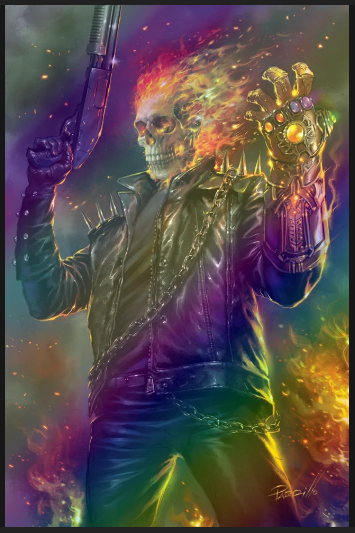
- This is a convention exclusive variant cover of Ghost Rider #265 featuring a “virgin” foil cover. The limited availability of convention editions can make them desirable for collectors.
-
Wolverine 1 (1988, Marvel Comics)
- This is the first issue where Wolverine appears under the alias “Patch” and features a back-cover pin-up by John Byrne. Wolverine’s enduring popularity makes early appearances like this collectible.

- This is the first issue where Wolverine appears under the alias “Patch” and features a back-cover pin-up by John Byrne. Wolverine’s enduring popularity makes early appearances like this collectible.
-
Amazing Spider-Man 238 (1983, Marvel Comics)
- This issue features the first appearance of the Hobgoblin, a major Spider-Man villain. It also came with a “Tattooz” insert and sample, adding an extra element for collectors.
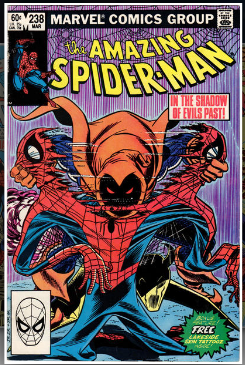
- This issue features the first appearance of the Hobgoblin, a major Spider-Man villain. It also came with a “Tattooz” insert and sample, adding an extra element for collectors.
-
Uncanny Avengers 2 Mexican Edition/El Quinto Mundo Edition (2024, Panini Mexico)
- This is a special Mexican edition foil variant cover of Uncanny Avengers #2 (2013). Foreign variant covers, especially limited editions, can hold value for collectors due to their unique nature.
It’s important to remember that these are just some reasons why these comics might be hot for grading. There are many other factors that can affect a comic’s value, such as its condition, rarity, and historical significance.
Top 15 List of Comics Submitted to CGC for Grading (Week of July 2nd, 2024)
What comics are sending a buzz through the collecting community this week? Here are the top 15 comics submitted to CGC (Comic Guaranty Company) for grading for the week of July 2,2024. From highly anticipated first appearances to iconic character milestones, this list offers a glimpse into the trends shaping the collector market and could hold the key to unearthing your next prized possession. Buckle up and get ready to discover comics with investment potential, nostalgic blasts from the past, and hidden gems waiting to be unearthed!
-
Ultimate Spider-Man 2 Third Printing (2011, Marvel Comics)
- Up 292 copies this week, the continued popularity of Ultimate Spider-Man is strong!

-
Yaira 1 (2024, Rippaverse Comics)
- Up 253 copies this week, featuring the first appearance of Stephanya, Yanessa, Yantoni, and Magus Nuummite.
-
Yaira 1 Variant Cover B (2024, Rippaverse Comics)
- Up 252 copies this week and similar to #2, the first appearances are likley what’s behind these submissions.
-
Wolverine Limited Series 1 (1982, Marvel Comics)
- Up 143 copies this week, the first solo Wolverine comic, Nuff Said!

- Up 143 copies this week, the first solo Wolverine comic, Nuff Said!
-
Batman/Superman: World’s Finest 19 Mora Variant Cover (2023, D.C. Comics)
- Up 129 copies this week. This variant cover features a “Nicolas Cage” homage, which could be appealing to fans of the actor or those who enjoy unique covers.
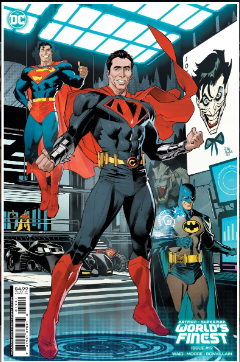
- Up 129 copies this week. This variant cover features a “Nicolas Cage” homage, which could be appealing to fans of the actor or those who enjoy unique covers.
-
X-Men 1 Special Collectors Edition (1991, Marvel Comics)
- Up 73 copies this week. This comic features the first appearance of the Acolytes, a group of mutants with a strong connection to Magneto. Additionally, it has a double gatefold cover and no ads, making it a more premium collectible.

- Up 73 copies this week. This comic features the first appearance of the Acolytes, a group of mutants with a strong connection to Magneto. Additionally, it has a double gatefold cover and no ads, making it a more premium collectible.
-
Deadpool 1 Mercado Variant Cover (2024, Marvel Comics)
- Up 68 copies this week. Deadpool’s immense popularity makes any new issue with his first appearance potentially valuable. This variant cover by Mercado might be a good investment for Deadpool fans.
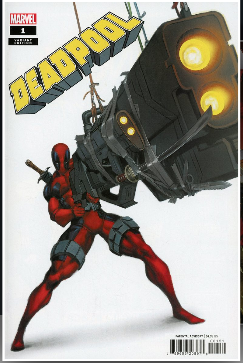
- Up 68 copies this week. Deadpool’s immense popularity makes any new issue with his first appearance potentially valuable. This variant cover by Mercado might be a good investment for Deadpool fans.
-
Wolverine: Facsimile Edition 1 Foil Edition (2024, Marvel Comics)
- Up 53 copies this week. This is a facsimile edition with a foil cover, replicating the first Wolverine comic (#1, 1988). Facsimiles can be collectible, especially for fans who might not be able to afford the original issue.

- Up 53 copies this week. This is a facsimile edition with a foil cover, replicating the first Wolverine comic (#1, 1988). Facsimiles can be collectible, especially for fans who might not be able to afford the original issue.
-
Marvel Super Heroes Secret Wars 8 (1984, Marvel Comics)
- Up 52 copies this week. This comic features the origin of the symbiote that eventually becomes Venom.

- Up 52 copies this week. This comic features the origin of the symbiote that eventually becomes Venom.
-
Crossover 6 (2021, Image Comics)
- Up 50 copies this week. While the reason for this specific issue’s popularity isn’t readily apparent, there could be a story arc or character development that has driven interest.
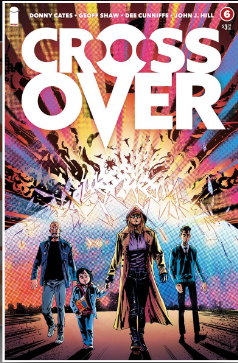
- Up 50 copies this week. While the reason for this specific issue’s popularity isn’t readily apparent, there could be a story arc or character development that has driven interest.
-
New Mutants 98 (1991, Marvel Comics)
- Up 49 copies this week. 1st appearance of Deadpool (Wade Wilson), Nuff Said!

- Up 49 copies this week. 1st appearance of Deadpool (Wade Wilson), Nuff Said!
-
Spider-Man 1 Silver Edition (1990, Marvel Comics)
- Up 47 copies this week. This might be a more affordable option for collectors who want a classic Spider-Man story.

- Up 47 copies this week. This might be a more affordable option for collectors who want a classic Spider-Man story.
-
Wonder Woman ’77 1 (2015, D.C. Comics)
- Up 43 copies this week. This comic ties into the popular Wonder Woman television show from the 1970s and might be a good choice for fans of that era.
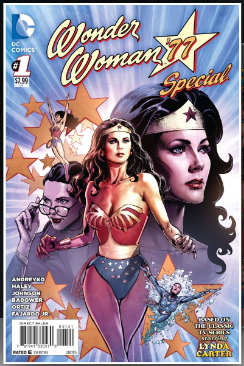
- Up 43 copies this week. This comic ties into the popular Wonder Woman television show from the 1970s and might be a good choice for fans of that era.
-
Tales of Mother F. Goose nn Conner Variant Cover (2021, AfterShock Comics)
- Up 41 copies this week. This variant cover by Amanda Conner is a homage to the movie poster for “Pulp Fiction” and could be appealing to fans of the film or those who enjoy unique covers.
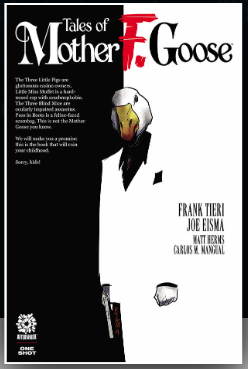
-
Amazing Spider-Man 300 (1988, Marvel Comics)
- Up 40 copies this week. This comic features the origin and first full appearance of Venom (Eddie Brock).

There you have it! Remember, the most valuable comics are often the ones that hold a special place in your heart. Happy collecting!
Top 15 List of Comics Submitted to CGC for Grading (Week of June 18th, 2024)
This week, collectors sent in a mix of modern and classic comics to CGC for grading, with a heavy emphasis on Teenage Mutant Ninja Turtles and recent Marvel titles. Here’s a breakdown of the top 15 submissions:
-
Teenage Mutant Ninja Turtles Reprint 2 BNG/ISH Edition C (2024, IDW Publishing): This reprint of TMNT #2 (1984) features the coveted “Virgin” cover, potentially driving interest due to its connection to a classic issue with a desirable cover.
-
Spider-Gwen: The Ghost-Spider 1 Frison Variant Cover (2024, Marvel Comics): Variant covers by popular artist Peach Momoko are often sought after, making this a potential hot pick for fans and collectors.
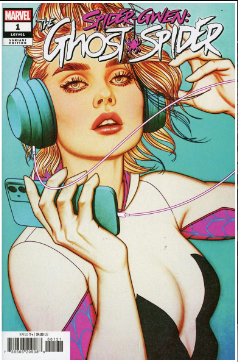
-
Spider-Gwen: The Ghost-Spider 1 ComicXposure “Virgin” Edition (2024, Marvel Comics): Similar to the TMNT reprint, the “Virgin” cover treatment on a recent issue could be fueling submissions.
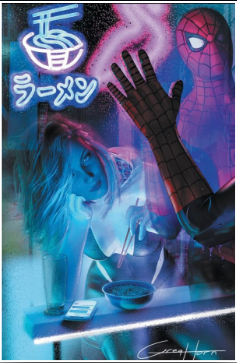
-
Marvel Comics #1 (2023, Pure Silver Foil): This first issue with a special pure silver foil cover might be getting graded to preserve its unique material and potential future value.

-
Teenage Mutant Ninja Turtles Reprint 2 BNG/ISH Edition A (2024, IDW Publishing): Another reprint of TMNT #2, this standard edition might be getting graded due to the overall popularity of the classic issue.
-
Teenage Mutant Ninja Turtles Reprint 2 BNG/ISH Edition B (2024, IDW Publishing): Yet another TMNT #2 reprint, with the “Virgin” cover, could be getting graded for the same reasons as #1.
-
Teenage Mutant Ninja Turtles Reprint 2 BNG/ISH Edition D (2024, IDW Publishing): The final TMNT reprint on the list features a wraparound cover, potentially getting graded by fans who prefer this unique format.
-
Guardians of the Galaxy 4 (2023, Marvel Comics): A recent issue of Guardians of the Galaxy might be getting graded due to ongoing fan interest in the characters, especially with a new movie on the horizon (speculative).

-
Amazing Spider-Man 300 (1988, Marvel Comics): This significant issue features the first full appearance of Venom (Eddie Brock), making it a major key issue for Spider-Man collectors.

-
Guardians of the Galaxy 1 Chew Variant Cover (2023, Marvel Comics): Variant covers by artist Leinil Yu are popular among collectors, potentially driving submissions of this specific edition.
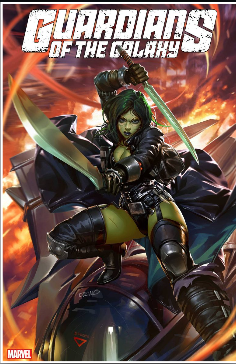
-
Spider-Man 1 Silver Edition (1990, Marvel Comics): A reprint of a classic issue featuring the Lizard, this edition might be getting graded for nostalgia or potential value.

-
Marvel Super Heroes Secret Wars 8 (1984, Marvel Comics): This issue features the origin of the symbiote that becomes Venom, making it a significant tie-in to the popular character.

-
Wolverine Limited Series 1 (1982, Marvel Comics): The first solo Wolverine comic holds historical significance, potentially driving collectors to get their copies graded and preserved.

-
Victor Garduno Artbook 2 Commander of the Gods Edition ( , Whatnot Publishing): This artbook by a popular artist might be getting graded for investment or preservation purposes.

-
Venom: Lethal Protector 1 (1993, Marvel Comics): The first issue of Venom’s own ongoing series with a special holo-grafx foil cover is a key issue for the character’s fans and collectors.

Which one is your favorite? Do you own any of these? Please let us know in the comments.
25 Superheroes Who have Yet to be Venomized!
The Marvel Universe loves a good symbiote story, with Venom leading the charge in turning heroes and villains into monstrous or sometimes awesome goo-covered versions of themselves but what about the characters who’ve managed to avoid being Venomized so far? Here’s a look at 25 popular Marvel characters who have yet to be Venomized!
- Wolverine: Logan’s healing factor and adamantium skeleton would be a nightmare for any symbiote hoping for a permanent home.
- Iron Man: Symbiotes after a guy encased in a constantly evolving Iron Man suit? Yeah, good luck.
- Captain America: Steve Rogers’ unwavering willpower and inherent good nature might make him a hard sell for a symbiote’s amped-up aggression.
- Thor: The God of Thunder with Asgardian physiology? Maybe symbiotes just know better than to mess with a god.
- Captain Marvel: Her cosmic-powered physiology and immense energy output would likely clash with the symbiote’s influence.
- Silver Surfer: Surfing the spaceways on a surfboard of pure cosmic energy? Not exactly symbiote-friendly real estate.
- Black Panther: Vibranium suit and advanced tech? Not the most welcoming environment for a symbiote.
- Black Widow: These skilled fighters might be appealing targets, but their lack of “overt” superpowers could make them less interesting hosts.
- Hawkeye: Same for Hawkeye, his sharp skills might not be as appealing to a symbiote seeking a powerful host.
- Daredevil: Matt Murdock’s heightened senses might make the symbiote’s presence overwhelming.
- Doctor Strange: The Sorcerer Supreme’s mastery of magic and his formidable will probably make him a nightmarish host for a symbiote.
- Scarlet Witch: Another powerful mind, Wanda’s chaotic magic would likely be a recipe for disaster for any symbiote seeking control.
- Moon Girl: Her genius intellect might make her a challenge for a symbiote to control.
- Colossus: Organic metal skin? No thanks, says the symbiote.
- Iron Fist: His mystical chi might be incompatible with the symbiote’s more primal urges.
- Star-Lord: Leading the Guardians across the galaxy keeps him pretty busy, and who knows, maybe space symbiotes have different tastes?
- Blade: The symbiote might shy away from a skilled vampire hunter with a strong will.
- Vision: The symbiote would be hard-pressed to latch onto Vision’s constantly fluctuating synthetic flesh/Vibranium form.
- Ms. Marvel (Kamala Khan): Her shapeshifting abilities might make her an inconsistent host for a symbiote seeking permanence.
- She-Hulk: Similar to her cousin Bruce Banner, She-Hulk’s strength and radiating gamma energy might make her an unsuitable host.
- Ant-Man (Scott Lang): His size-changing abilities could make him an inconsistent host for a symbiote.
- Wasp: Hope’s bio-energy manipulation and insect wings would likely be a challenge for a symbiote.
- Jessica Jones: Her cynicism and general “leave-me-alone” vibe might not mesh well with the symbiote’s desire for a willing host.
- Black Cat: Felicia Hardy’s bad luck might extend to repelling any approaching symbiotes!
- Namor: The Sub-Mariner’s underwater kingdom and amphibian physiology might not be the most appealing environment for a symbiote.
That’s our list! 25 Marvel characters who, so far, have avoided the slimy embrace of a symbiote. But remember, the Marvel Universe thrives on surprises. While some of these characters have donned the inky black suit in alternate realities or “What If” stories, the mainstream continuity remains symbiote-free for them.
But hey, that doesn’t mean the future isn’t full of possibilities! Maybe a cosmic mishap will fling Captain America into the path of a rogue symbiote, or perhaps Doctor Strange’s mystical defenses will finally falter. One thing’s for sure, in the ever-expanding world of Marvel Comics, no character is truly safe from a good (or bad) dose of symbiote action. So, keep an eye out, true believers, the next symbiote saga could be just around the corner!
Did I miss one of your favorites or possibly get one wrong? Please let us know in the comments.
Top 15 List of Comics Submitted to CGC for Grading (Week of June 11th, 2024)
Hot off the Presses! This week, CGC collectors sent in a diverse selection of comics for grading, with some established heroes, exciting first appearances, and even a homage cover making the list. Here’s a breakdown of the top 15 submissions:
- RippaZine 1 Collector’s Edition (2024, Rippaverse Comics): 517 added to the census this week. This collector’s edition features the first appearance of Salvage, a new character in the Rippaverse. The inclusion of interviews with established comic creators Chuck Dixon, Mike Baron, and Dean Cain might also be driving interest.

- .RippaZine 1 (2024, Rippaverse Comics): 414 added to the census this week. Another entry from Rippaverse, this standard edition of RippaZine 1 again featuring the first appearance of Salvage.
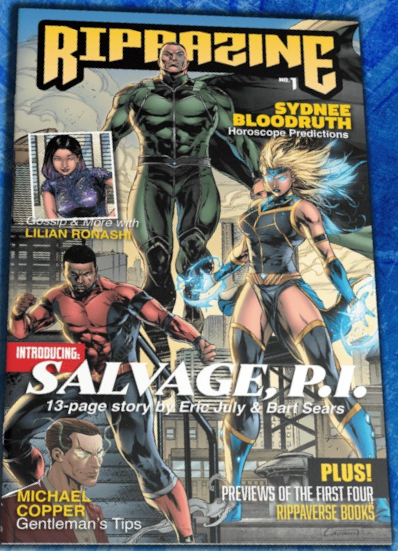
- Wolverine Limited Series 1 (1982, Marvel Comics): 234 added to the census this week A classic for Wolverine fans, this issue marks his first solo series and features a cameo by Yukio on the last page.

- Marvel Comics #1 (2023, (2023) Pure Silver Foil): 148 added to the census this week. This unique variant boasts a pure silver foil cover, making it a standout for collectors who specialize in special editions.

- Spider-Gwen: The Ghost-Spider 1 Momoko Variant Cover (2024, Marvel Comics): 144 added to the census this week. This issue features a variant cover by popular artist Momoko, likely driving interest among fans of her work.
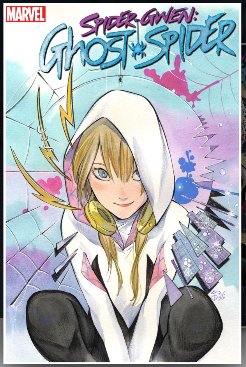
- X-Men 1 (1991, Marvel Comics): 126 added to the census this week. This issue showcases the first appearance of the Acolytes, a mutant group with ties to Magneto. The unique aspect of having four covers that combine into a single image adds another layer of collectibility.

- Wolverine 1 (1988, Marvel Comics): 102 added to the census this week. Wolverine takes on the alias “Patch” in this issue, making it a sought-after key moment for Wolverine collectors. The back cover pin-up by John Byrne adds further appeal.

- Eros/Psyche 2 Variant Cover D (2021, Ablaze): 96 added to the census this week. This variant cover pays homage to the iconic “Pulp Fiction” movie poster, potentially attracting fans of the film and comic book art enthusiasts alike.

- Spawn 1 (1992, Image Comics): 87 added to the census this week. A perennial favorite, Spawn’s first appearance continues to be a hot property, especially with the presence of the 2nd Image “i” logo and a pull-out Spawn poster.

- X-Men ’97 1 Liefeld Orange Foil Edition (2024, Marvel Comics): 85 added to the census this week. This foil edition featuring art by Rob Liefeld offers a unique take on a popular series, making it a potential target for X-Men fans and foil variant collectors.
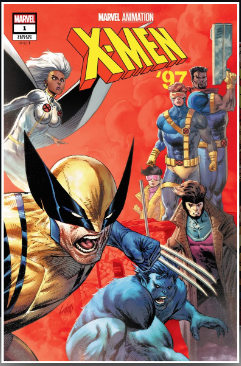
- Doom 1 Lashley “Virgin” Edition (2024, Marvel Comics): 80 added to the census this week. This “virgin” edition, featuring a cover without text or logos, offers a fresh perspective on Doctor Doom and might be appealing to variant cover enthusiasts. The inclusion of an MF DOOM epigraph adds another layer of intrigue.
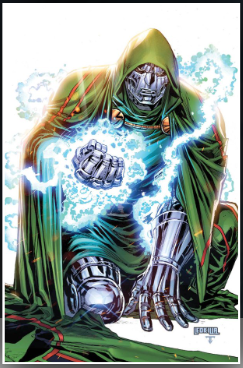
- Thundercats 1 Browne “Virgin” Edition (2024, Dynamite Entertainment): 70 added to the census this week. Similar to the Doom variant, this “virgin” edition of Thundercats #1 by artist Ryan G. Browne provides a clean cover experience and could be a target for collectors who specialize in such editions.
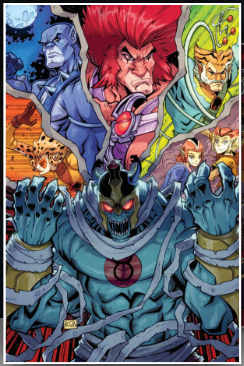
- Deadpool 1 Variant Edition (2024, Marvel Comics): 66 added to the census this week. 1st Appearance of Death Grip and the presence of a foil cover suggests it might be a visually striking collectible for Deadpool fans.
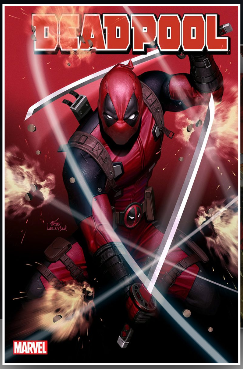
- Spider-Gwen: The Ghost-Spider 1 Momoko “Virgin” Edition (2024, Marvel Comics): 65 added to the census this week. Another “virgin” edition featuring Momoko’s art style, this time for Spider-Gwen, caters to fans of the artist and variant covers.

- Guardians of the Galaxy 3 Reis Variant Cover (2023, Marvel Comics): 60 added to the census this week. This variant cover by artist Rod Reis showcases the Guardians of the Galaxy team with a Western Sunset theme which seems to appeal to fans.
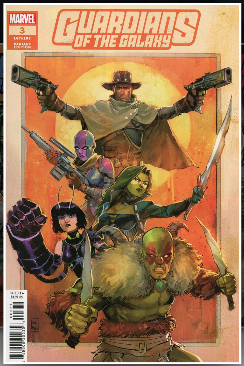
Which one is your favorite? Do you own any of these? Please let us know in the comments.
Top 15 List of Comics Submitted to CGC for Grading (Week of June 5th, 2024)
New releases, hot characters, and valuable reprints. Here’s a breakdown of the top 15 submissions for last week:
- Guardians of the Galaxy 2 Second Printing (2023, Marvel Comics): Up 130 copies from last week. Not sure why.

- Guardians of the Galaxy 2 Mercado Variant Cover (2023, Marvel Comics): Up 113 copies from last week. Not sure why.

- Amazing Spider-Man: Facsimile Edition 300 (2023, Marvel Comics): Up 103 copies from last week. This facsimile edition of a key issue (Amazing Spider-Man #300) with a moderate price increase (18.4%) might be getting graded for potential investment or preservation.

- X-Men 1 (1991, Marvel Comics): Up 98 copies from last week. This classic issue with the first appearance of the Acolytes might be getting graded due to its ongoing popularity and potential for high grades.

- Batman: Facsimile Edition 181 (2023, D.C. Comics): Up 85 copies from last week. Similar to the Spider-Man facsimile edition, this reprint of a valuable Batman issue (Batman #181) might be getting graded for investment or collecting purposes.
 6. G.I. Joe: A Real American Hero 301 (2023, Image/Skybound): Up 77 copies from last week.Not sure why.
6. G.I. Joe: A Real American Hero 301 (2023, Image/Skybound): Up 77 copies from last week.Not sure why.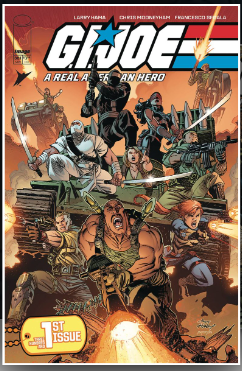
- Star Wars 1 (1977, Marvel Comics): Up 75 copies from last week. This classic Star Wars adaptation might be getting graded due to its enduring popularity.

- Eros/Psyche 2 Variant Cover D (2021, Ablaze): Up 61 copies from last week. This variant with a unique “Pulp Fiction” homage cover might be getting graded due to its collectibility and potential for high grades in a modern comic.
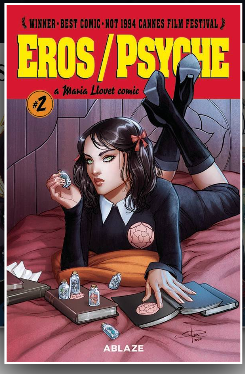
- Marvel Super Heroes Secret Wars 8 (1984, Marvel Comics): Up 61 copies from last week. This key issue featuring the origin of Venom might be getting graded due to movie spec.

- Amazing Spider-Man: Facsimile Edition 300 Foil Edition (2023, Marvel Comics): Up 60 copies from last week. Similar to the regular facsimile edition, this foil variant of a key issue might be getting graded for investment or high-grade collecting.

- Amazing Spider-Man 361 (1992, Marvel Comics): Up 57 copies from last week. This first full appearance of Carnage might be getting graded due to the villain’s enduring popularity and movie spec.

- Ultimate Spider-Man 1 (2024, Marvel Comics): Up 57 copies from last week. The Hottest book of 2024 so far.

- Spider-Man 1 Silver Edition (1990, Marvel Comics): Up 53 copies from last week. Not sure why other than a Lizard appearance.
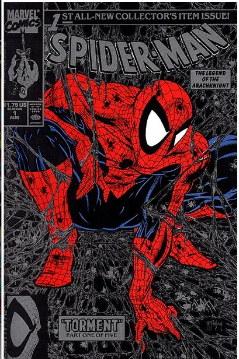
- Amazing Spider-Man 300 (1988, Marvel Comics): Up 52 copies from last week.The origin and first full appearance of Venom is a perennial favorite, and collectors are likely getting this graded for investment purposes.

- Thundercats 1 Comic Sketch Art “Virgin” Edition B (2024, Dynamite Entertainment): Up 52 copies from last week. This 1:25 Incentive variant with sketch art might be getting graded due to its collectibility and potential for high grades in a limited edition.
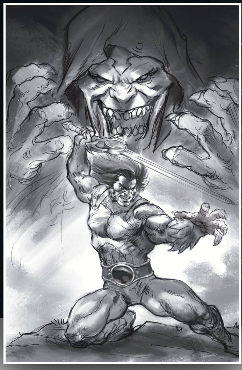
Which one is your favorite? Please let us know in the comments.
Top 15 List of Comics Submitted to CGC for Grading (Week of May 28th, 2024)
This weeks submissions feature new releases and some sought-after classic comics. Here’s a breakdown of the top 15 comics submitted.
- Amory Wars: Good Apollo, I’m Burning Star IV v2 #1 BOOM! Direct Reserve Gold Foil Edition (2024, Boom! Studios): Gold Foil Edition.
- Marvel Super Heroes Secret Wars 8 (1984, Marvel Comics): This classic issue features the first appearance of the alien symbiote that eventually becomes Venom.
- Amory Wars: Good Apollo, I’m Burning Star IV v2 #1 BOOM! Direct Reserve Red Foil Edition (2024, Boom! Studios): Red Foil Edition.
- X-Men 1 (1991, Marvel Comics): First appearance of the Acolytes
- Amazing Spider-Man 43 Variant Edition (2024, Marvel Comics): This recently released variant cover pays homage to the classic X-Men #1 (1963) cover while featuring Spider-Man.
- Venom: Lethal Protector 1 (1993, Marvel Comics): This issue features Venom’s first solo title and a Spider-Man appearance, with a red holo-graphics foil cover.
- Uncanny X-Men 266 (1990, Marvel Comics): This comic features the full first appearance of Gambit.
- Amazing Spider-Man 252 (1984, Marvel Comics): First appearance of the black costume Spider-Man and features an homage cover to Amazing Fantasy #15.
- Amazing Spider-Man 361 (1992, Marvel Comics): This comic features the full first appearance of the villain Carnage (Cletus Kasady).
- Amazing Spider-Man 300 (1988, Marvel Comics): This issue features the origin and full first appearance of Venom (Eddie Brock).
- Spawn 1 (1992, Image Comics): First appearance of Spawn (Al Simmons).
- Wolverine 1 (1988, Marvel Comics): This issue features Wolverine’s first appearance as Patch and a back-cover pin-up by John Byrne.
- Transformers 1 (2023, Image/Skybound): This recent first issue from the Transformers franchise saw a significant increase in submissions, suggesting potential for a valuable collectable.
- New Mutants 98 (1991, Marvel Comics): First appearance of Deadpool (Wade Wilson) alongside Gideon, Copycat (Vanessa Carlysle) as Domino, and marks Rictor’s departure from the New Mutants team.
- Spider-Man 1 Silver Edition (1990, Marvel Comics): This issue features a Lizard appearance.
Which one is your favorite? Please let us know in the comments.
Please note: This list is based on CGC data and sales trends, and it does not guarantee future value. It’s always wise to do your own research before submitting comics for grading.
Top 15 List of Comics Submitted to CGC for Grading (Week of May 19th, 2024)
This week, collectors sent a diverse selection of comics to CGC for grading, with a mix of modern first appearances, high-demand variants, and key back issues. Here’s a breakdown of the top 15 submissions and why they might be hot right now:
- Ultimate Spider-Man 1 (2024, Marvel Comics): No surprises here
- Spawn 1 (1992, Image Comics): The first appearance of Spawn remains a cornerstone of the Image Comics era and a perennial favorite for collectors.
- Wolverine 1 (1988, Marvel Comics): Wolverine’s first solo comic and his “Patch” persona are significant moments in the character’s history.
- X-Men 1 (1991, Marvel Comics): The first appearance of the Acolytes and the iconic four-cover image make this a desirable X-Men issue.
- Marvel Super Heroes Secret Wars 8 (1984, Marvel Comics): This issue features the origin of the symbiote that becomes Venom, a major Spider-Man villain
- Batman: Facsimile Edition 181 (2023, D.C. Comics): The first appearance of Poison Ivy.
- Wolverine Limited Series 1 (1982, Marvel Comics): 1st solo Wolverin comic. Yukio cameo on last page
- New Mutants 98 (1991): This issue boasts the first appearances of Deadpool and Domino, making it highly sought-after by fans.
- Ghost-Spider 2 Mexican Edition/El Quinto Mundo Edition (2024, Panini Mexico): This unique variant with a foil cover could be a desirable collectible for fans of Spider-Gwen.
- Amazing Spider-Man 252 (1984): Ties with Marvel Team-Up for the first appearance of Spider-Man’s black costume.
- Teenage Mutant Ninja Turtles 100 Mexican Edition/Momoko Variant cover (2024, Kamite): This “Death of Splinter” variant by Peach Momoko is likely sought-after due to the artist’s popularity and the variant’s limited nature.
- Amazing Spider-Man 43 East Side Comics Edition (2024, Marvel Comics): This limited edition variant could be a valuable addition for Spider-Man collectors.
- Uncanny X-Men 266 (1990): This issue features the full first appearance of Gambit, a popular X-Men character.
- Spider-Man 1 Silver Edition (1990): This classic cover with a Lizard appearance could be a great addition for Spider-Man collectors.
- Star Wars: Yoda 6 Okazaki Variant Cover (2023, Marvel Comics): This 1:25 variant by artist Takeshi Okazaki might be a hot collectible due to the artist’s fame and the enduring popularity of Star Wars.
Additional Notes:
- The availability of graded copies (census numbers) and the overall market trends can also influence why collectors choose to submit specific comics for grading.
Remember, this is just a snapshot of the current market. Always do your own research before submitting comics for grading.
Reprints, Facsimiles, and 2nd Prints Explained: Your Guide to Decoding these Comics
Have you ever stumbled upon a comic with a familiar story but a different cover? Or maybe you’ve seen an issue advertised as an “exact replica”? When it comes to comics, terms like reprints, facsimiles, and 2nd prints can get confusing. But fear not, fellow comic enthusiast, this guide will explain the differences between these types of comics, helping you find the perfect addition to your collection (or bookshelf)!
Reprints: The Basics
Reprints are the most common way to get your hands on older comics. They’re essentially republished versions of the original issue, focusing on delivering the core comic book story. Here’s what you might find with reprints:
- Modern format: New cover art, branding, and potentially higher quality printing.
- Color and art remastering: Especially for older comics, the artwork might be recolored or remastered for a more modern look.
- Bonus content: Some reprints include extras like creator interviews or behind-the-scenes information.
Facsimiles: A Collector’s Treasure
Facsimiles are a special type of reprint targeted towards collectors who value authenticity. Imagine a high-quality photocopy – that’s the idea behind a facsimile. These meticulous reprints aim to be exact replicas of the original comic, including:
- Original cover art (including any printing errors!)
- Original coloring and paper quality (which may appear dated compared to modern comics)
- Original advertisements and any other features from the first printing
2nd Prints: Keeping Up with Demand
Sometimes, a comic becomes so popular that the initial print sells out. To satisfy this high demand, publishers may release a 2nd print (or 3rd, 4th, etc.). Think of it as a way to restock a popular item. Here’s what to expect with 2nd prints:
- Identical content: The story and artwork remain exactly the same as the 1st print.
- Printing number indication: The publisher usually marks the printing number on the comic (often in the indicia).
- Different cover art (possible): They might use a different cover to distinguish the 2nd print from the 1st.
Choosing the Right Classic Comic
The best option for you depends on your goals:
- Casual reading: Standard reprints are a perfect way to enjoy a classic story in a modern format.
- Collectors: Facsimiles offer the closest experience to owning the original issue, with all its historical significance and imperfections.
- Specific issue: If you missed out on the 1st print, a 2nd print can be a great alternative, but generally holds less value.
No matter your experience level, understanding these terms empowers you to make informed decisions when hunting for classic comics!
Top 15 List of Comics Submitted to CGC for Grading (Week of May 14th, 2024)
This week, CGC saw a surge of submissions featuring both hot new releases as well as some sought-after back issues. Here’s a breakdown of the top 15 comics submitted for the week of May 14, 2024.
- Deadpool 1 Comic Mint Foil Edition (2024, Marvel Comics): This first issue with a “virgin” cover (no text or logos) could be a future collectible, especially if the story arc gains popularity. The “Mint Foil” edition adds another layer of appeal for variant cover enthusiasts.
- Transformers 1 (2023, Image/Skybound): This first issue from the new creative team at Image Comics is a significant milestone for the Transformers franchise.
- Star Wars: Visions – Takashi Okazaki 1 (2024, Marvel Comics): This debut issue ties into the popular “Star Wars: Visions” animated anthology. With a limited print run and the involvement of a renowned artist (Takashi Okazaki), collectors might be hoping for a high-grade copy to hold value.
- Guardians of the Galaxy 2 (2023, Marvel Comics): This recent issue boasts a massive sales jump compared to the previous one, potentially indicating a turning point in the series or a hot storyline.
- Ultimate Spider-Man (2024, Marvel Comics): One of the Hottest books of 2024 so far!
- Eros/Psyche 2 Variant Cover D (2021, Ablaze): This cover pays homage to the cult classic film “Pulp Fiction,” making it a unique collectible for fans of both the movie and the comic series.
- Ultimate Spider-Man 1 Campbell Variant Cover (2024, Marvel Comics):
- Ultimate Spider-Man 1 Torque Variant Cover (2024, Marvel Comics):
- X-Men 1 (1991, Marvel Comics): The first appearance of the Acolytes.
- Ultimate Spider-Man 1 Stegman Variant Cover (2024, Marvel Comics)
- Fire and Ice 1 Variant Cover W (2023, Dynamite Entertainment): This virgin first issue with its adult themes and a potentially limited print run could be a target for collectors seeking rare variants.
- G.I. Joe, A Real American Hero: Larry Hama Cut 1 (2023, Image/Skybound): This reprint of the classic G.I. Joe #1 by legendary writer Larry Hama might be a nostalgic grab for collectors, especially in high grades.
- Batgirl 23 Bird Ctiy Comics Foil Edition B (2024, D.C. Comics): Reprints can be valuable too, especially limited foil editions like this one. Who doesn’t love a Foil reprint?
- Teenage Mutant Ninja Turtles 100 Mexican Edition/Momoko Variant cover (2024, Kamite): This unique variant featuring a popular cover artist (Peach Momoko) and a “Death of Splinter” storyline could be a double whammy for collectors, especially those interested in international editions.
- Spawn 1 (1992, Image Comics): A fan favorite, Spawn #1 often finds its way onto this list.
Are you speccing on any of these? Please let us know in the comments.
Top 15 List of Comics Submitted to CGC for Grading (Week of May 7th, 2024)
This week, CGC saw a surge in submissions featuring both classic and hot new releases. Let’s dive into the top 15 and explore why collectors might be eager to get these comics graded:
- Wolverine Limited Series 1 (1982, Marvel Comics): The first solo Wolverine comic holds a special place in collectors’ hearts. With a Yukio cameo on the last page, this key issue could be fetching high prices in high grades.
- TMNT: The Last Ronin II Re-Evolution 1 BNG/ISH “Virgin” Edition (2024, IDW Publishing): This is a Hot New Issue folks are betting on, with a staggering 11,500% increase, it’s clear collectors are hot on this variant.
- Spawn 350 Employee Edition (2024, Image Comics): A special edition not available to the public, this Employee Edition could be a valuable piece for Spawn fans and collectors of exclusive variants.
- Ghost Rider: Final Vengeance 1 Convention Edition (2024, Marvel Comics): This edition features a “virgin” foil cover of a beloved character, Ghost Rider. “Virgin” covers often hold more value for collectors due to their rarity.
- Amazing Spider-Man #1 (2023, Pure Silver Foil): This special edition with a silver foil cover commemorates a recent storyline. As a first issue with a unique cover, collectors might be looking to preserve this piece in top condition.
- TMNT: The Last Ronin II Re-Evolution 1 BNG/ISH Edition (2024, IDW Publishing): Another entry from the popular “Last Ronin” series, this standard edition might be getting graded due to the overall popularity of the storyline.
- Beneath the Trees Where Nobody Sees 1 Cowabunga Comics Edition (2024, IDW Publishing): This homage cover to the classic “Where the Wild Things Are” could be attracting collectors due to its unique artistic connection.
- X-Men 26 Ross Variant Cover (2023, Marvel Comics): A “virgin” cover variant by Alex Ross, a superstar artist, is likely driving submissions for this X-Men issue.
- Ultimate X-Men 1 (2024, Marvel Comics): The first issue of a new “Ultimate” series reboot might be getting graded in anticipation of the series’ potential success.
10 (tie). Marvel Super Heroes Secret Wars 8 (1984, Marvel Comics): This classic issue features the first appearance of the alien symbiote that eventually becomes Venom. With Venom’s continued popularity, collectors might be seeking to preserve their copies.
10 (tie). X-Men 1 (1991, Marvel Comics): This X-Men issue features the first appearance of the Acolytes and has four variant covers that combine to form one large image. Collectors might be getting graded copies to ensure they have a complete set of the variants.
- Star Wars 1 (1977, Marvel Comics): The first part of the classic Star Wars movie adaptation in comic form could be getting graded due to the enduring popularity of the franchise.
- Amazing Spider-Man 252 (1984, Marvel Comics): This issue ties with another comic for the first appearance of the black costume Spider-Man. The homage cover to Amazing Fantasy #15 might also be a factor.
- New Mutants 98 (1991, Marvel Comics): The first appearance of Deadpool, nuff said.
- Amazing Spider-Man 300 (1988, Marvel Comics): The origin and first full appearance of Venom is a major draw for collectors.
Which one is your favorite? Please let us know in the comments.
Are Incentive Ratio Comics a Good Investment? The Allure and Uncertainty:
The world of comic book collecting is vast, with countless issues, variants, and rarities to chase. The chase is my favorite part! Incentive ratio variants, particularly those with designations like 1:10, 1:25, and 1:50, hold a special allure for collectors due to their perceived scarcity. But are they truly a sound investment? This article dives into the concept of incentive ratios and explores the factors influencing their investability.
Understanding Incentive Ratios:
These variants are produced in limited quantities compared to the standard cover (called Cover A). The ratio (e.g., 1:10) signifies that for every 10 copies of Cover A a retailer orders, they receive 1 copy of the incentive variant. So, a 1:50 variant is scarcer than a 1:25 variant, and so on.
The Investment Potential:
- Scarcity: The limited print run fuels the potential for high value, especially for popular characters or storylines. Ideally, as fewer copies exist, the price should increase due to high demand.
- Artist Popularity: A cover featuring a coveted artist can significantly boost the value of an incentive variant.
- Speculative Appeal: Sometimes, a character’s future movie or TV appearance can create a buying frenzy for related comics, potentially inflating the price of incentive variants.
The Flip Side of the Coin:
- Market Saturation: The sheer number of incentive variants published can create market saturation. With so many options, some variants might not see significant price appreciation.
- Condition Sensitivity: As with all collectible comics, condition is paramount. A near-mint or pristine copy will always command a higher price.
- Unpredictable Market: The comic book market is inherently volatile. Trends can shift quickly, and factors like movie adaptations don’t always guarantee success.
Investing Wisely:
The world of incentive ratio comics offers exciting possibilities, but navigating the market requires a well-defined strategy. Here’s a breakdown of key considerations for buying and selling:
Buying:
- Do your research: Before diving in, research the specific comic, artist, character, and overall market trends.
- Focus on condition: Always prioritize high-grade, well-preserved copies. A near-mint or pristine variant will hold greater value.
- Consider the ratio: Scarcity matters. A 1:100 variant will likely be more valuable than a 1:25 variant for the same comic, assuming similar artistic merit.
- Long-term vs. Short-term: Decide your goals. Are you looking for a quick flip or a long-term investment?
Quick Flips:
- Hot properties: Look for variants tied to characters with upcoming movies, TV shows, or video games. These can experience surges in demand but may cool off quickly.
- Limited windows: Consider variants with short printing windows or those exclusive to specific conventions. Early sales might yield good profits.
Long-Term Investments:
- Classic characters: Variants featuring iconic characters like Spider-Man, Batman, or Superman have a history of holding value over time.
- Acclaimed artists: Variants by legendary or rising star artists can appreciate in value as their reputation grows.
- Personal connection: Invest in comics you genuinely enjoy, not just based on pure speculation. Passion can fuel a long-term perspective.
How Rare are they anyways, an estimate:
While the exact rarity is difficult to pinpoint due to several factors, here’s a breakdown to estimate the rarity of 1:25 and 1:50 incentive variants considering the number of comic shops:
Factors Affecting Rarity:
- Number of Shops: The total number of comic shops participating in the incentive program influences the variant’s circulation. More shops mean potentially more variants in existence.
- Orders per Shop: The average number of Cover A comics a shop typically orders affects the number of incentive variants they receive. Higher average orders lead to more variants.
- Unsold Copies: Not all incentive variants shops receive are guaranteed to sell. Some might remain unsold, affecting the total circulating copies.
Making an educated guess:
- Comic Shop Estimates: In the US and Canada, there are roughly around 2,500-3,000 comic shops (based on industry reports). This is a flexible number, but it gives us a starting point.
- Average Orders: It’s difficult to determine a definitive average, but let’s assume an average shop orders 100 copies of Cover A for a new release (this might be an underestimate for popular titles).
- Variant Allocation: For a 1:25 ratio, a shop would get 4 copies (100 / 25) of the variant per their order. For a 1:50 ratio, they would receive 2 copies (100 / 50).
Estimated Rarity:
With these assumptions, here’s a very rough estimate:
- A 1:25 variant might have a print run in the ballpark of 10,000 copies (2,500 shops * 4 variants per shop).
- A 1:50 variant could potentially fall around 5,000 copies (2,500 shops * 2 variants per shop).
Important Caveats:
- This is a simplified example, and the actual numbers could be higher or lower.
- It doesn’t consider factors like unsold copies or regional variations in shop orders.
- Publisher print runs are not always public knowledge, so these are just estimates.
In conclusion:
While a 1:25 or 1:50 variant is certainly scarcer than the standard cover, it’s not necessarily an ultra-rare collectible. The exact rarity depends on various factors beyond just the ratio. Focus on your research, prioritize high-grade copies, and understand the inherent market fluctuations before making any investment decisions.
Remember: The comic market is inherently unpredictable. Don’t invest more than you can afford to lose, and be prepared to hold onto comics for several years to see a significant return.
Additional Tips:
- Develop relationships: Network with comic shops and collectors to get insights into market trends and potential deals.
- Stay informed: Follow industry publications and online forums to stay up-to-date on market shifts and news.
- Buy with caution: Beware of forgeries and manipulated markets. Always purchase from reputable sources.
Ultimately, the best strategy is to find a balance between calculated investment and genuine enjoyment. By understanding the market, setting realistic goals, and prioritizing quality, you can navigate the exciting, yet unpredictable, world of incentive ratio comics.
The Takeaway:
Incentive ratio comics can be tempting investments, but they are not a guaranteed path to profits. A careful approach, considering market trends, artist popularity, and long-term commitment, is crucial. Remember, collecting comics should also be driven by passion and enjoyment, not solely by potential returns.
Gear Up for Free Comic Book Day 2024: A Glimpse into the Free Comics!
Mark your calendars, comic collectors! Free Comic Book Day (FCBD) is this Saturday May 4th. Participating comic book stores as well as some libraries will be giving away a selection of free comics, offering a fantastic chance to discover new series, revisit old favorites, and introduce friends and family to the wonderful world of comics. Here’s a sneak peek at some of the enticing titles you can expect to snag on FCBD 2024, with synopses found from around the web:
- FCBD 2024 UNICORN CRUSH: The title hints at a magical story about a young girl and her love for unicorns.
- THE WORLDS OF JAMES TYNION IV: This comic will likely showcase a collection of stories written by comic book writer James Tynion IV. (Look out for potential collectability depending on the stories included)
- HELLBOY STRANGER THINGS (BUNDLES OF 20): Brace yourselves for a thrilling mashup as Hellboy and the crew from Stranger Things collide in this interdimensional adventure! (Potential for collectability depending on the story)
- FCBD 2024 JONNY QUEST: Join Jonny Quest, Hadji, Bandit, and Race for action and adventure in this all-ages comic based on the classic Hanna-Barbera cartoon.
- TEENAGE MUTANT NINJA TURTLES (BUNDLES OF 20): Everyone’s favorite shell-shocked heroes, the Teenage Mutant Ninja Turtles, are back for a free comic book adventure!
- ENERGON UNIVERSE SPECIAL: Transformer fans can explore the world of Energon in this special FCBD issue.
- ULTIMATE UNIVERSE SPIDER-MAN #1 (BUNDLES OF 20): Swing into action with a new adventure featuring the web-slinging superhero, Spider-Man, from the Ultimate Universe. (Look out for potential collectability depending on the story)
- BLOOD HUNT X-MEN #1 (BUNDLES OF 20): Dive into a mutant mystery in this free X-Men comic, potentially setting the stage for a new storyline. (Look out for potential collectability depending on the story’s significance)
- FCBD 2024 DISNEYS ENCANTO & TURNING RED NEW ADV.: This special edition promises fresh stories featuring the beloved characters from Disney’s Encanto and Turning Red. Perfect for introducing young readers to comics.
- WITCHES OF BROOKLYN EXC #1: No synopsis available yet, but the title suggests an exciting story about witches. (Depends on the story’s reception)
- FCBD 2024 POKEMON ADV RUBY ALPHA SAPPHIRE & SPLATOO: Calling all Pokemon trainers! This free comic likely features adventures with Pokemon from Ruby, Sapphire, and Splatoon.
- Star Wars: Gear up for a Star Wars adventure!
- Monster High New Scaremester: Clawesome news for Monster High fans! This free comic will feature your favorite ghoulfriends.
- Maleficent: Explore the world of Maleficent in this free comic based on the popular Disney film.
- Doctor Who The Fifteenth Doctor Faces a Fearsome New Threat: The Doctor is in for a free comic book adventure!
- Street Fighter vs Final Fight #1: Dive into the worlds of Street Fighter and Final fight in this free comic featuring legendary fighters.
- One Piece Aces Story & Status Royale: Calling all One Piece pirates! Set sail for adventure with a free One Piece comic.
- GANNIBAL (MR): No synopsis available yet, but this title hints at a dark and thrilling story.
- THE VALIANTS: No synopsis available yet, but The Valiants promises an exciting superhero adventure. (Look out for potential collectability depending on the story)
- CURSEDVERSE BLIGHTED DAWN #1: Cursedverse: Blighted Dawn #1 sounds like the start of a new supernatural series.
- SNOOPY BEAGLE SCOUT ADVENTURES: Everyone’s favorite beagle, Snoopy, is back for an all-ages adventure!
- ULTRADUCK SAMPLER: Get a taste of the world of Ultraduck in this sampler comic.
- TONS OF STRANGE: Featuring Charley & Humphrey, The Aquabats and Elizabeth’s Tale.
- ARCHIE HORROR PRESENTS CURSED LIBRARY PRELUDE: Archie Comics takes a spooky turn with this prelude to their horror series.
- STAR WARS PLANTS VS ZOMBIES (BUNDLES OF 20): Prepare for a botanical battle as Star Wars meets Plants vs. Zombies in this free comic.
- MAD FCBD SPECIAL EDITION: Get your dose of wacky humor with a free MAD Magazine comic.
- MARVEL & FANTAGRAPHICS PRSNT ATLAS COMICS: Marvel Comics teams up with Fantagraphics to present a collection of Atlas Comics stories.
- INVESTIGATORS CLASS ACTION SNEAK PEAK: Get a sneak peek at the Investigators comic series with this free preview.
- ROMEO VS JULIET KILL SHAKESPEARE ADV.: This title suggests a unique twist on the classic Shakespearean play Romeo and Juliet.
- Eye Lie Popeye: A new story featuring the spinach-loving sailor man Popeye.
- Dying Inside: Details about “Dying Inside” are scarce. It could be a dark and suspenseful story based on the title, but without more information, it’s difficult to say for sure.
- Far Cry: Based on the popular video game franchise Far Cry. The games typically involve action-adventure stories set in open worlds, so the comic will likely feature a similar premise.
- Marvel Voices #1: Marvel Voices is an anthology comic that often features stories by diverse creators and focuses on under-represented characters in the Marvel Universe. Issue #1 might be the first installment of a new series or a special one-shot introducing new stories or characters.
With options for superhero enthusiasts, all-ages readers, and those seeking something different, there’s truly something for everyone. So head down to your local comic book store on May 4th and celebrate the joy of comics! Happy Hunting!
Top 15 List of Comics Submitted to CGC for Grading (April 23, 2024)
This week, collectors sent a diverse selection of comics to CGC for grading, with some driven by nostalgia, hot characters, and limited-edition variants. Let’s delve into the top 15 and explore the potential reasons behind their popularity:
- Star Trek: Annual 2023 nn Photo Variant Cover D (2023, IDW Publishing): This comic features a photo cover of legendary Star Trek actors William Shatner and Patrick Stewart. With the recent resurgence of Star Trek content, this variant could be attracting fans seeking a unique piece of memorabilia.
- Ghost-Spider 2 Mexican Edition/El Quinto Mundo Edition (2024, Panini Mexico): This Mexican exclusive features a foil cover, making it a visually striking collectible for fans of Ghost-Spider (Gwen Stacy) and variant hunters.
- Marvel Comics #1 (2023, Pure Silver Foil): This mysterious entry with a pure silver foil cover could be generating speculation due to its limited nature and the lack of information about its content. First issues with unique covers often pique collector interest.
- Star Wars 45 Christopher Variant Cover A (2024, Marvel Comics): This variant by artist John Tyler Christopher could be sought after by Star Wars fans who enjoy his work or collectors who specialize in action figure variants.
- Marvel Super Heroes Secret Wars 8 (1984, Marvel Comics): This classic comic features the origin of the symbiote that bonds with Eddie Brock to become Venom. With Venom’s continued popularity, key issues in his origin story remain valuable.
- Spider-Man 7 Ramos Variant Cover (2023, Marvel Comics): This variant by artist Humberto Ramos might be popular due to his acclaimed work on Spider-Man and the potential connection to the first appearance of Spider-Boy (already a valuable collectible).
- Venom: Lethal Protector 1 (1993, Marvel Comics): This iconic comic features the first issue of Venom’s own ongoing series, with a Spider-Man appearance. The combination of a popular character’s first solo title and a guest appearance by another major hero makes this a desirable comic.
- Spawn 1 (1992, Image Comics): The first appearance of Spawn (Al Simmons) is a cornerstone of Image Comics and the 1990s collector market. Movie speculation and Spawn’s popularity continues to drive submissions for grading.
- Spider-Man 1 Silver Edition (1990, Marvel Comics): This issue features the Lizard as the main villain, but might be graded due to its “Silver Edition” status.
- Amazing Spider-Man 300 (1988, Marvel Comics): This significant issue features the full first appearance of Venom (Eddie Brock), making it a highly sought-after collectible for Spider-Man and Venom fans. This just happens to be one of the most submitted book for grading.
- New Mutants 98 (1991, Marvel Comics): The first appearance of Deadpool, a character who has exploded in popularity in recent years. Movie news is keeping this book hot.
- Ultimate Spider-Man 1 Third Printing/Jonathan Comics Edition B (2024, Marvel Comics): Easily one of the most popular books out right now and the Jonathan Comics cover is straight fire!
- Thundercats 1 Asrar “Virgin” Foil Edition (2024, Dynamite Entertainment): This it the visually stunning Mahmud Asrar foil variant.
- Ultimate Spider-Man 1 (2024, Marvel Comics): Again one of the most popular books of the year and the First Print Cover A is the preferred cover.
- Looney Tunes 277 Spectral Comics Edition B (2024, D.C. Comics): This is the Gabriele Dell’Otto edition, exclusive to Spectral Comics featuring Bat Duck and Super Bugs Limited to 1,000 sets.
Which one is your favorite? Please let us know in the comments.
- The Mark Spears Monsters Series: Why It’s Captivating Fans
- Top 15 List of Comics Submitted to CGC for Grading (Week of January 7th, 2025)
- Have Comics Lost Their Magic? Golden Age vs. Modern Comics
- Top 10 Unbelievable Comic Book Cameos Featuring Donald Trump
- Comics are More Than Just Paper: Why First Editions Are Gold
